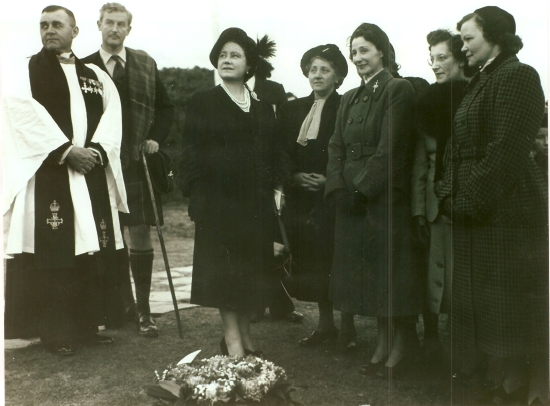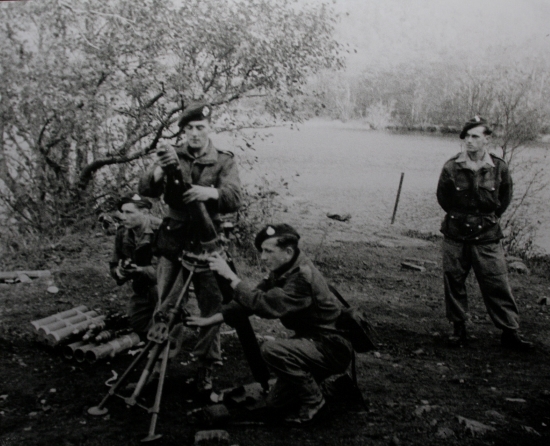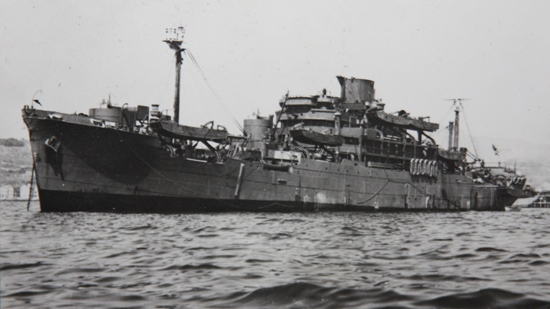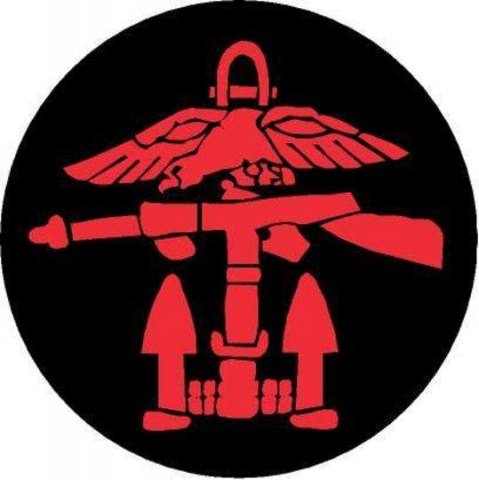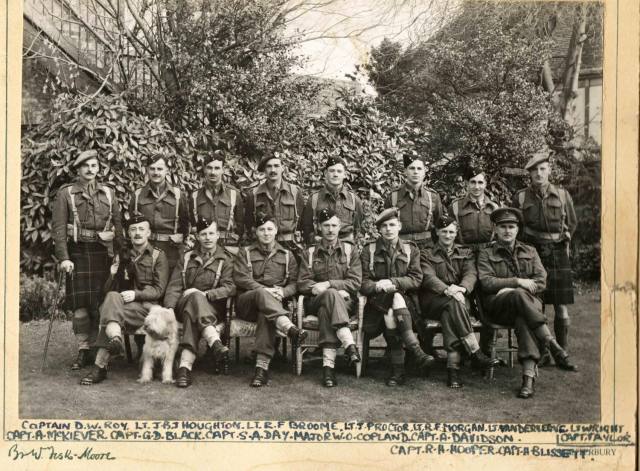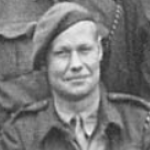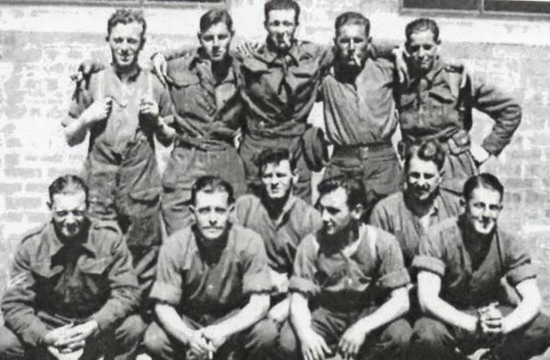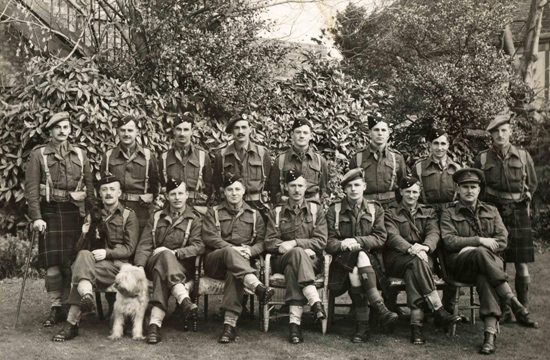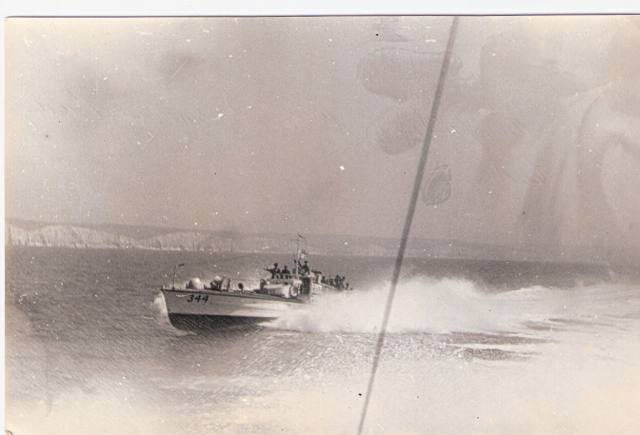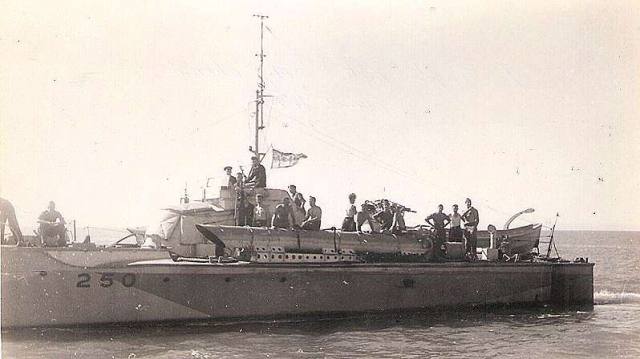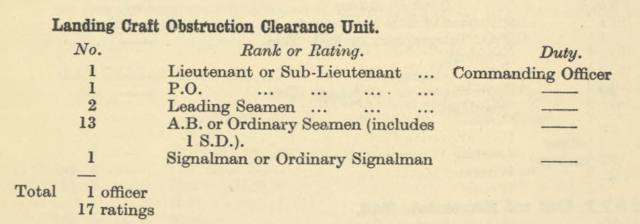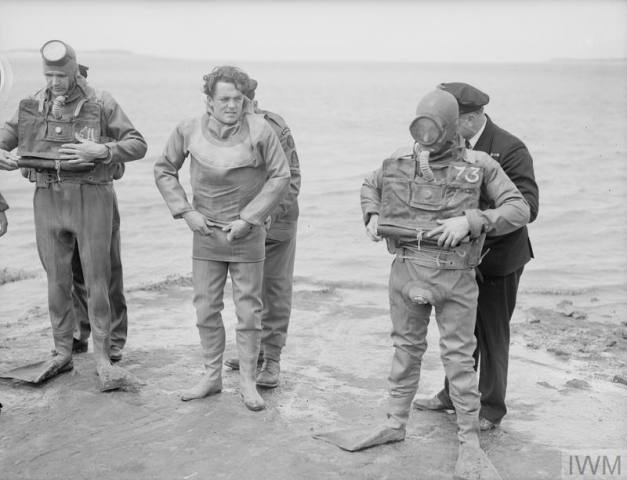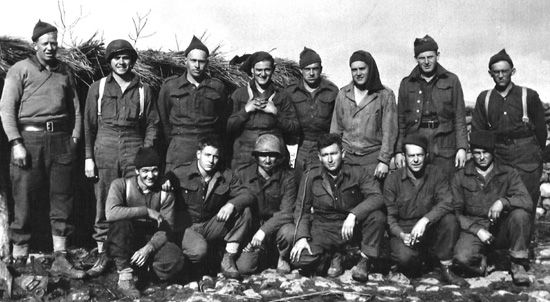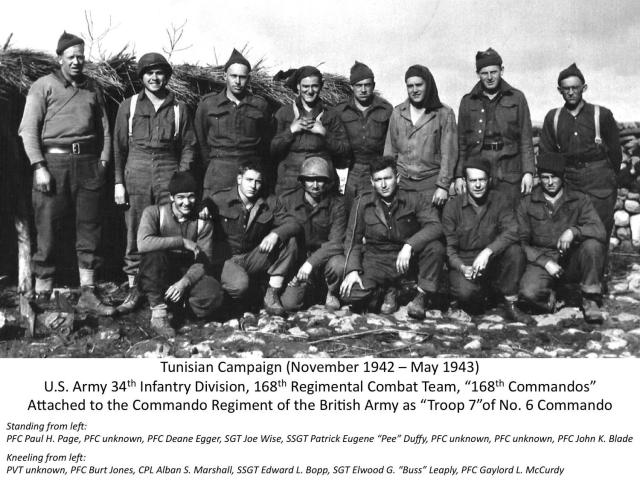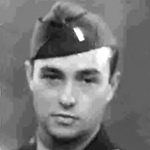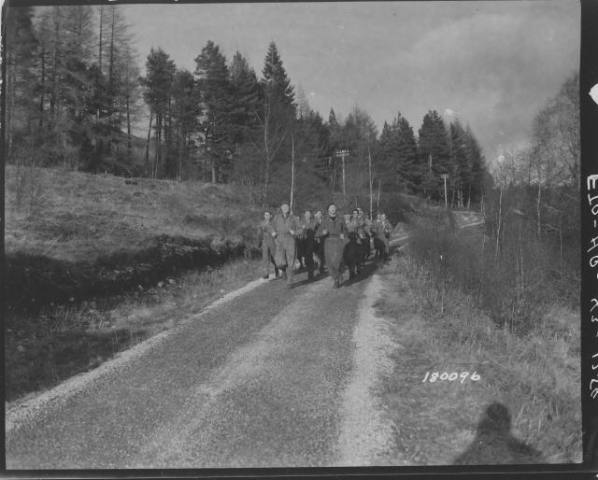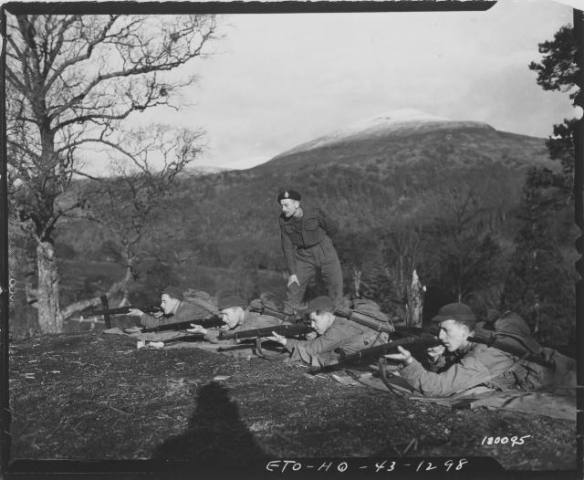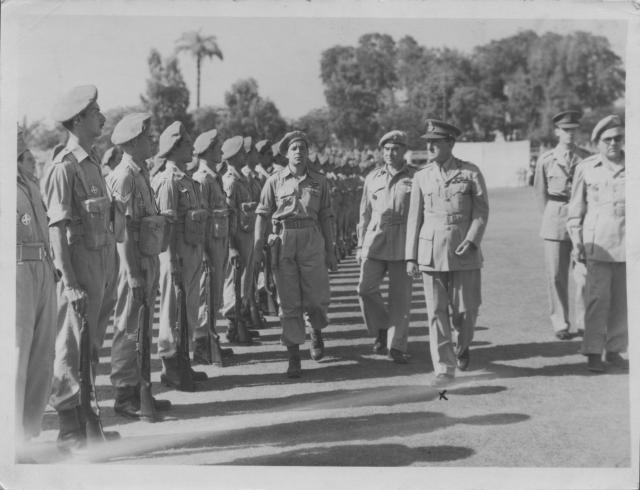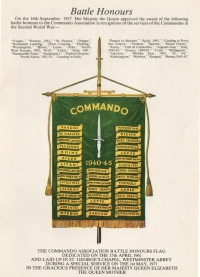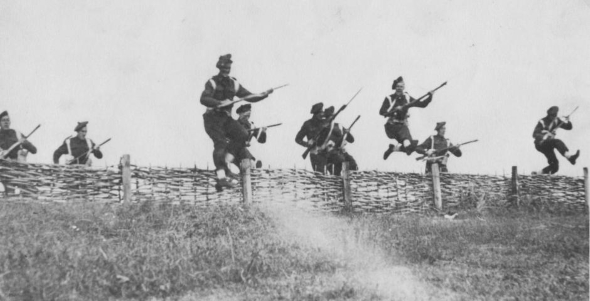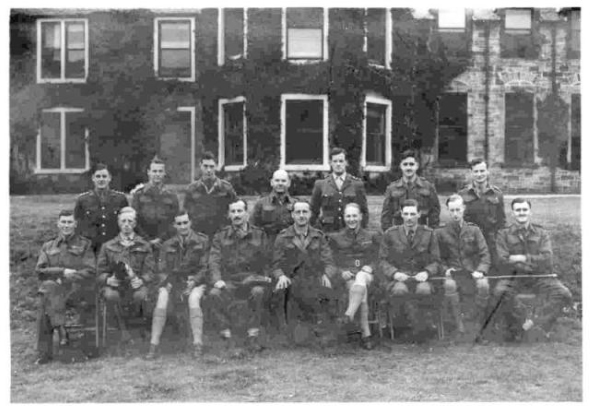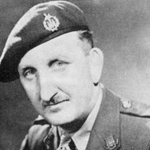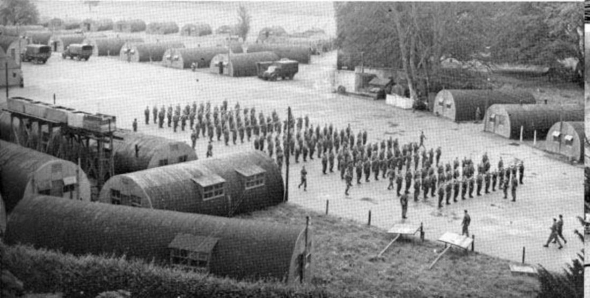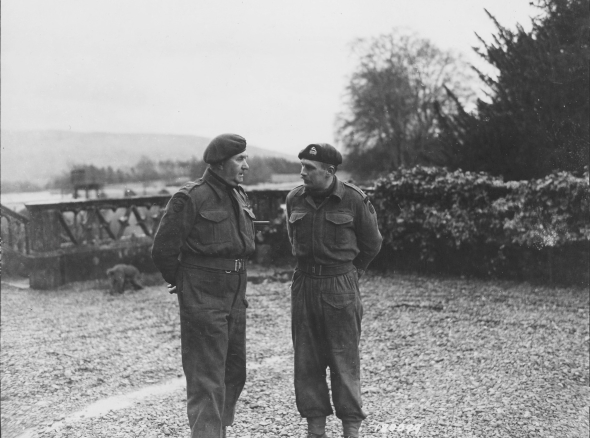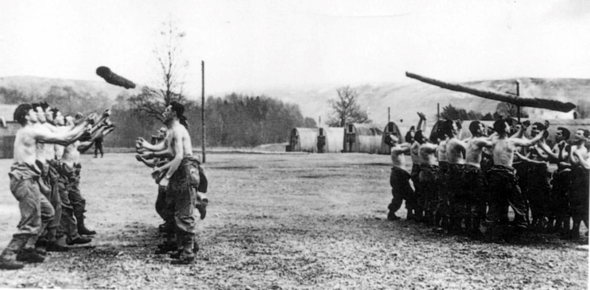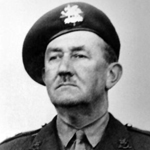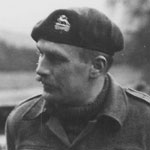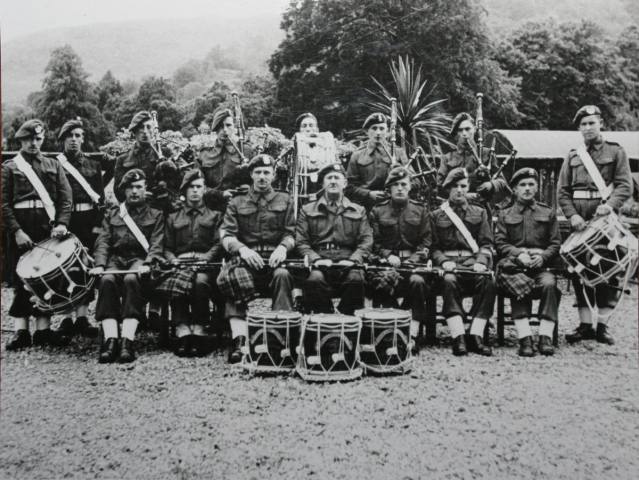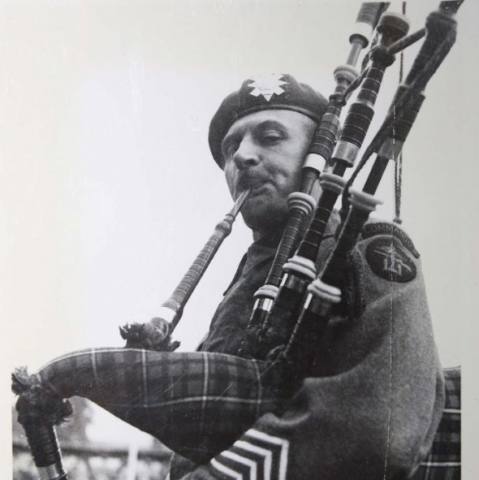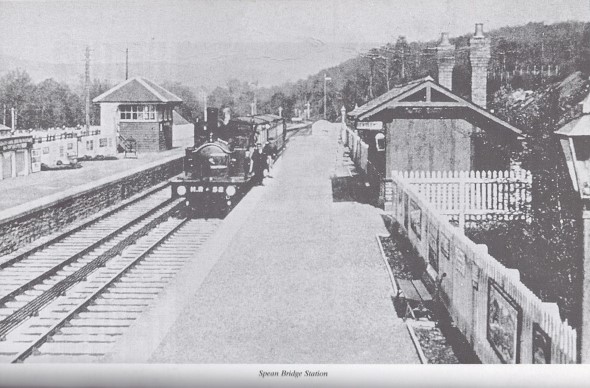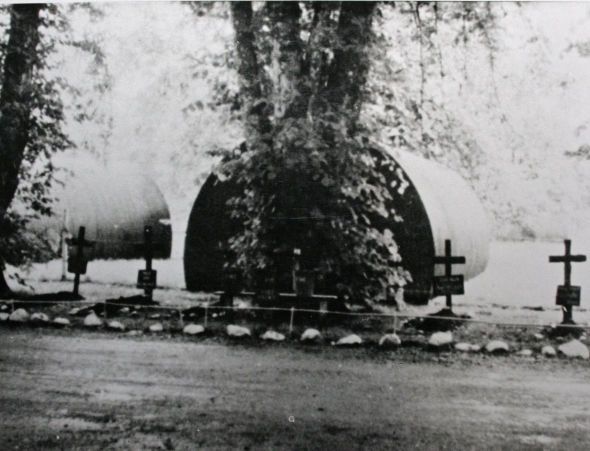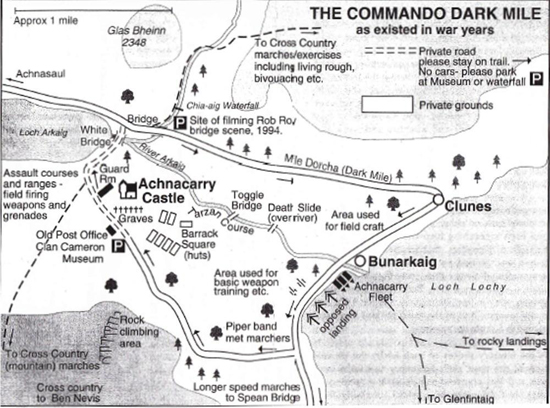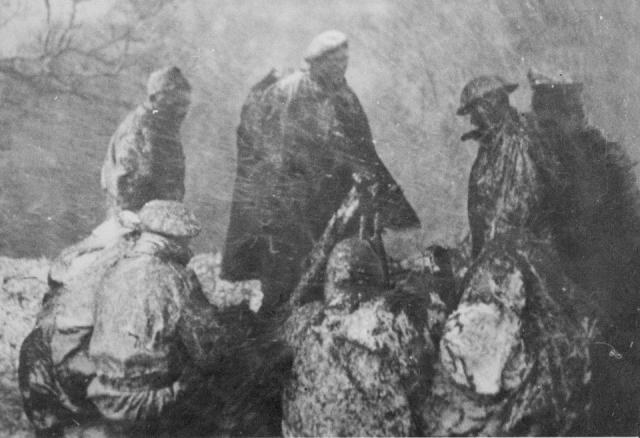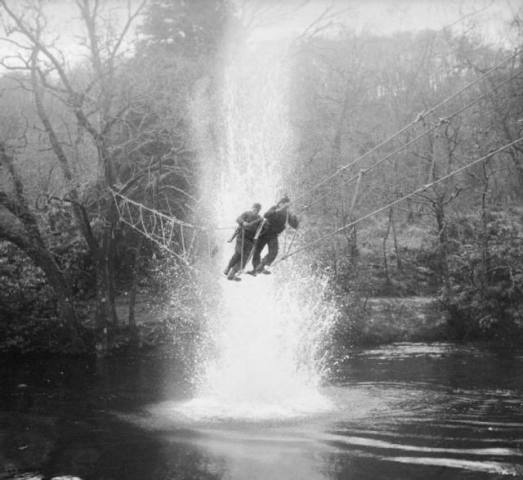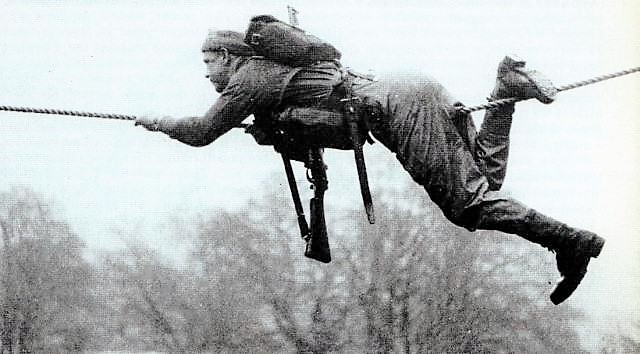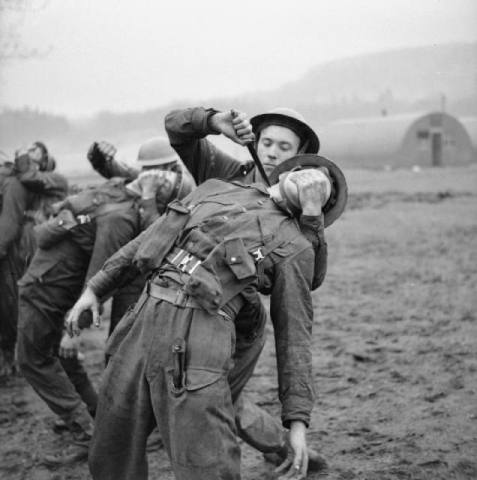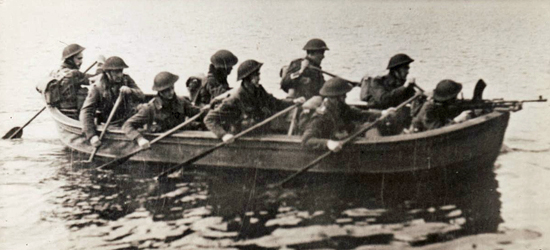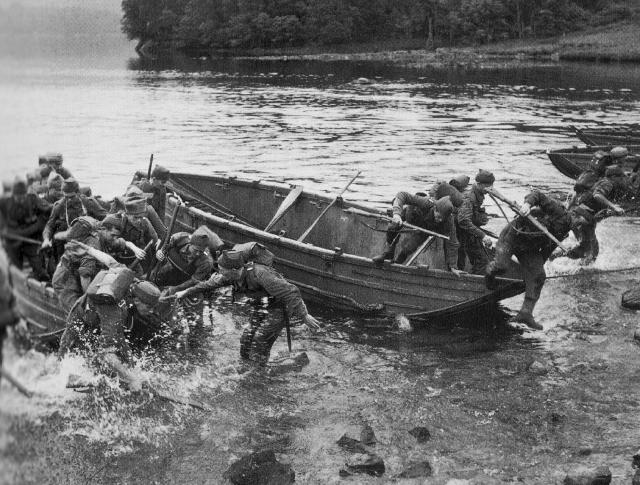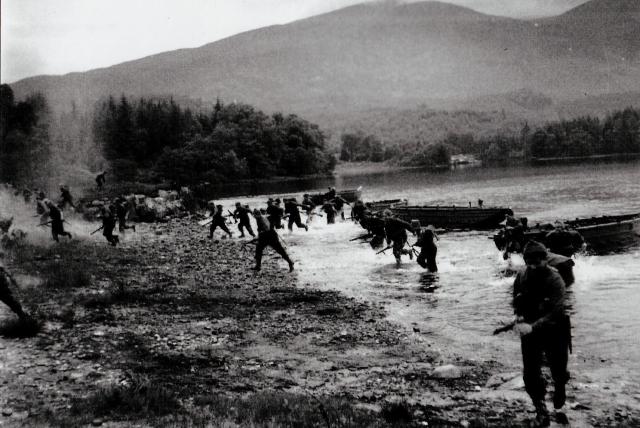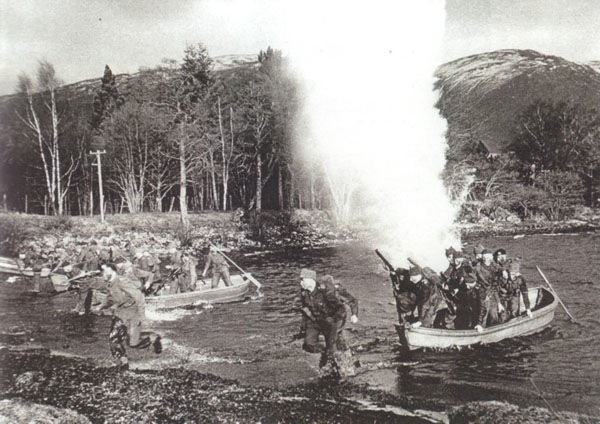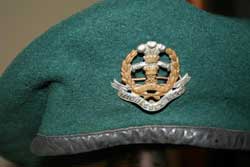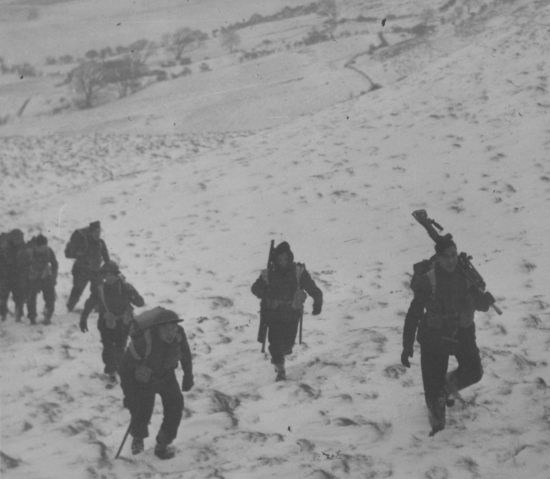
'History and Training 1940 -1945'
Introduction
- Purchase James Dunning's book here It Had to be Tough
- Purchase Donald Gilchrist's book here Castle Commando.
- We have a section in our gallery dedicated to commando training.
© Commando Veterans Archive 2014.
-
WW2 Training Centres - Roll of Honour [view......].
* The original Commando Association stood down in 2005. Some members then formed a new group, the Commando Veterans Association. They reverted to Commando Association in June 2019.
Read on from below......
Combined Operations
Combined Operations Headquarters
Source: National Archives Series reference DEFE 2.
Arising from the armistice concluded by France with Germany in June 1940 and the evacuation of British forces from the Continent, a small organisation was established to take command of subsequent raiding operations against enemy territory and to provide advice on combined assaults. From this emerged a distinct Combined Operations Headquarters, staffed by all three services, but independent of all of them and under the command of a Director of Combined Operations.
Admiral of the Fleet, Sir Roger Keyes, was appointed first director in July 1940; he was succeeded in October 1941 by Commodore Lord Louis Mountbatten with the title Adviser on Combined Operations. In March 1942 this title was altered to Chief of Combined Operations; it was also decided that the Chief of Combined Operations should attend meetings of the Chiefs of Staff as a full member whenever major issues were in question and, as previously, when his own combined operations or any special matters in which he was concerned were under consideration. In October 1943 Lt. Col. Robert Edward Laycock became Chief of Combined Operations.
From the establishment of a Combined Training Centre in August 1940 at Inveraray, Argyllshire, the Combined Operations Command expanded rapidly both within the United Kingdom and overseas, notably in the Middle East and India. In 1942 it sent a permanent representative to the Joint Staffs Mission in Washington and in the same year a Combined Operations Experimental Establishment was set up at Appledore, Devon. This establishment was much involved in the investigation of problems likely to be encountered on the beaches in connection with an invasion of Europe, particularly as regards the landing of armoured vehicles, stores, supplies, etc. Following the successful invasion of Normandy in 1944, a similar establishment was set up in India to carry out the developments and trials necessary in the very different conditions in the Far East.
From its formation, Combined Operations Headquarters maintained a close, though sometimes strained, contact on the naval side with the Admiralty, which set up a number of combined operations branches within its own departments, particularly in relation to operations, materials and personnel. Raiding forces, such as commandos, came under the command of Combined Operations Headquarters, except when they were employed as part of larger operations.
Throughout the war Combined Operations Headquarters played a key role in the development of offensive operations against the enemy. This was notably the case in the raid on Dieppe in August 1942 and the preparation and planning of the North Africa and Sicily campaigns in 1942 to 1943, the invasion of Europe in 1944 and similarly, through its directorate in India, in operations in the Far East.
Independent Companies and Special Service Battalions
- No.1 Independent Company from 52nd Lowland Divn.,
- No.2 Independent Company from 53rd Welsh Divn.,
- No.3 Independent Company from 54th East Anglian Divn.,
- No.4 Independent Company from the 55th (West Lancs) Division. At the time the 55th were a two Brigade Motor Divn consisting of 164 Bde. : 9th Btn. Kings Regt, 1/4th Btn The South Lancs Regt, and 2/4th Btn. the South Lancs. Regt; 165 Bde. : 5th Btn. Kings Regt, 1st Btn. Liverpool Scottish QOCH, and 2nd Btn. Liverpool Scottish QOCH.
- No.5 Independent Company from the 56th (1st London) Divn.,
- No.6 Independent Company from the 9th Scottish Divn.,
- No.7 Independent Company from the 15th Scottish Divn.,
- No.8 Independent Company from the 18th Eastern Divn.,
- No.9 Independent Company from the 38th Welsh Divn.,
- No.10 Independent Company from the 66th East Lancs Divn.
- No.11 Independent Company formed 14 June 1940 under Major R. Tod. with 350 OR's.
In June 1940 the first of the new army commando units were also being raised. A few months later on 11 October 1940 the Independent Companies were reorganised into Special Service (SS) Battalions merging with some of the new Commando units.
- 1st Special Service Bn., A and B Coys., formed from Nos.1,2,3,4,5,8 and 9 Independent Companies.
- 2nd Special Service Bn. formed from No.6 and 7 Independent Companies and the only recently formed No.9 and 11 Commandos;
- 3rd Special Service Bn. formed from Nos.4 and 7 Commando;
- 4th Special Service Bn. formed from Nos.3 and 8 Commando;
- 5th Special Service Bn. formed from Nos.5 and 6 Commando.
It should be noted during this period of change a detachment of 64 from the 1st Special Service Bn. had already departed for submarine operations in Malta, and in January 1941 a much larger force from 2, 3, and 4 Special Service Bn.'s had departed for a Middle East deployment known as Layforce. As a result Army Casualty Records for Layforce [more....] recorded a few individuals by their now defunct Special Service Battalion designation at the time of departure rather than by their current designated Commando unit within Layforce.
Roll of Honour
1 Independent Company
No.1 Independent Company formed from 52nd Lowland Division. Part of Scissors Force, a section of the British Expedition to Norway in May 1940.
2 Independent Company
No.2 Independent Company formed from 53rd Welsh Division. Part of Scissors Force, a section of the British Expedition to Norway in May 1940.
3 Independent Company
No.3 Independent Company formed from 54th East Anglian Division. Part of Scissors Force, a section of the British Expedition to Norway in May 1940.
Report by Lt. Clibborn
Transcript of a report to the Essex Regiment by Lt Clibborn after the particpation of No. 3 Independent Company in the expedition to Norway as part of Scissors Force.
4 Independent Company
4 Independent Company Nominal Roll
It is not complete. Many went on to serve in No.2 Commando.
Contact us with details to have an a name included, or provide additional information.
| Surname | Forenames | Rank | S/N | Additional |
|---|---|---|---|---|
| Ashcroft | Arthur, 'The Hawk' | Pte | 2929623 | Liverpool Scots. 1st Bn; 2 Cdo 5 troop PoW St Nazaire |
| Aspey | William | Pte | 2930678 | Liverpool Scots. 2nd Bn; 2 Cdo 5 troop |
| Auld | Luke, Patchcott | Pte | 2931015 | Liverpool Scots. 2nd Bn; Scissors Force; Force X; Cpl ME Cdo Depot; SBS; PoW Escapee |
| Backhouse | Charles, R. | Pte | 2931647 | Liverpool Scots. 2nd Bn; Force X; 1st SAS, PoW escapee |
| Baldwin | CQMS | 9th King's | ||
| Baybutt | Jack, F. | Pte | 2929879 | Liverpool Scots. 1st Bn. ; returned to unit |
| Black | Graeme, Delamere | 2/Lieut | 106240 | 2/4th S.Lancs; 2 Platoon Cdr; ScissorForce; 2 Cdo executed Op Musketoon - DSO, MC |
| Blissett | D.A. | 2/Lieut | 5th King's | |
| Blissett | H.H. | Capt | 90331 | Intel; 2 Cdo; 1 SS Bde Maj. - MiD |
| Blythe | William, 'Bil' | Pte | 2930644 | Liverpool Scots. 2nd Bn; 2 Cdo 5 troop PoW St Nazaire |
| Broome | Richard, Frank, 'Dickie' | 2/Lieut | 85468 | 1/4th S. Lancs; Sec Cdr 2 Platoon; Scissors Force; Force X; OC 2 Cdo 5 Tp; kia Salerno |
| Brown | Louis, Walter, 'Ben' | LCpl | 2929147 | Liverpool Scots. 1st Bn; 2 Cdo 5 Troop PoW St Nazaire |
| Bruce | Kenneth, 'Ken' | Sgt | Liverpool Scots. 2nd Bn; later TSM 5 Troop 2 Cdo until 1942 | |
| Burke | Edward, 'Tiny' | Pte | 2929845 | Liverpool Scots. 1st Bn; 2 Cdo 5 troop |
| Campbell | J | Pte | 2929397 | Liverpool Scots. 1st Bn; Scissors Force; returned to unit. |
| Carnston | J.B. | Lieut | 5th King's; No.1 Platoon Cdr. | |
| Cheetham | Jack, F. | Pte | 2930999 | Liverpool Scots. 2nd Bn; 2 Cdo 5 Troop PoW St Nazaire |
| Clarke | John, 'Nobby' | Pte | Liverpool Scots; ScissorsForce; Force X | |
| Clarke | R.S. | Pte | 2929615 | Liverpool Scots. 1st Bn; Scissors Force; returned to unit |
| Coates | Edward | Cpl | Liverpool Scots 2nd Bn; Force X; 2 Cdo 5 Troop | |
| Copland | William,Oranmore, 'Bill' | Captain | 50169 | 2 I/C 4 Ind Coy then OC from Sept41; ScissorsForce; 2 I/C No.2 Cdo; PoW St Nazaire - DSO |
| Cox | Hugh | Pte | 2931801 | Liverpool Scots. 2nd Bn; 2 Cdo 5 Troop St Nazaire |
| Davidson | Andrew | Lieut | Liverpool Scots; 3 Platoon Cdr; Scissors Force; 2 Cdo 5 Tp injured 1941 mcy acc reurned to Liverpool Scots | |
| Day | Stanley, Ambrose | Lieut | 70873 | 55th Div Signals; Adjutant 4 Ind Coy; No.2 Cdo PoW St Nazaire awarded MC |
| Dorman | S.L. | 2/Lieut | 55th Div. RE | |
| Dougal | D | Pte | 2928382 | Posted from ITC Camerons; HQ Sigs; returned to unit |
| Drennan | A. Leslie | Pte | 2929199 | Liverpool Scots. 1st Bn |
| Douglas | Edward, 'Ted' | Pte | 2927913 | Liverpool Scots. 1st Bn; 2 Cdo 5 troop St Nazaire |
| Evans | K.R.H. | 2/Lieut | 2/4th S.Lancs; 2 Sec Cdr 2 Platoon | |
| Forshaw | Leslie, 'Les' | Pte | 2930952 | Liverpool Scots. 2nd Bn; Scissors Force; Force X |
| Frost | G.L. | 2/Lieut | 1/4th S.Lancs; Sec cdr 2 Platoon | |
| Fryer | Bennet, William, 'Ben' | Pte | 2931435 | Liverpool Scots 2nd Bn; 2 Cdo 5 Troop |
| Geddes | Robert, C.E.B. | Pte | 2929914 | Liverpool Scots. 1st Bn; Scissors Force; returned to unit |
| Gerrie | R | Pte | 2930581 | Liverpool Scots. 1st Bn; returned to unit; transferred to CMP |
| Gwynne | John, Edward, Herbert | Pte | 2929834 | Liverpool Scots; No.2 Cdo 5 troop; kia St Nazaire - MiD |
| Harding | H. John | LCpl | 2931062 | Liverpool Scots 1st Bn |
| Hayes | A.F. 'Nat' | Pte | 2929843 | Liverpool Scots. 1st Bn |
| Hoare | Albert | LCpl | 2929174 | Liverpool Scots. 1st Bn; returned to unit; later joined No.5 Cdo |
| Holt | Frederick | Pte | 2929875 | Liverpool Scots. 2nd Bn; 2 Cdo 5 Troop PoW St Nazaire |
| Homer | Levi, 'Leo' | Pte | 2930668 | Liverpool Scots. 2nd Bn; 2 Cdo 5 troop |
| Honey | Peter | Pte | 2930015 | Liverpool Scots. 1st Bn; MM with No.2 Cdo 5 troop PoW St Nazaire |
| Hooper | Richard, Henry | 2/Lieut | 70956 | 5th King's; Cdr Support Sec Platoon; ScissorForce, 2 Cdo, Op Archery, St Nazaire - MC |
| Horrobin | Leslie, G.J. | Pte | 2929849 | Liverpool Scots. 1st Bn; Scissors Force; returned to unit |
| Houghton | J.B. | Lieut | 130206 | see record for Johnson-Houghton |
| Hughes | William, A. 'Bladder' | Pte | 2929408 | Liverpool Scots. 1st Bn; 2 Cdo 5 Troop PoW St Nazaire |
| Hurst | Edward | Pte | 2931768 | Q.O.C.H; 2 Cdo 5 Troop St Nazaire |
| Jackson | Terence, 'Terry' | Cpl | 2929594 | Liverpool Scots. 1st Bn; left to OCTU |
| Jameson | James, A. | Pte | 2929294 | Liverpool Scots. 1st Bn; returned to unit |
| Johnson | J | Pte | 2931063 | Liverpool Scots. 1st Bn; Scissor Force; returned to unit; transferred to CMP |
| Johnson-Houghton | Joseph, Blundell | Lieut | 130206 | South Lancs; ScissorsForce, St Nazaire, Captain awarded MC, executed Op Musketoon |
| Jones | Colin | Pte | 2931662 | Liverpool Scots. 2nd Bn; 2 Cdo 5 Troop PoW St Nazaire |
| Jones | Harry | Pte | Liverpool Scots. 2nd Bn; to A.A.C; PoW at Arnhem | |
| Kelly | D.J. | Pte | 292262 | Liverpool Scots. 1st Bn; returned to unit |
| Knowles | John, A. 'Johnny' | Pte | 2931031 | Liverpool Scots. 2nd Bn; 2 Cdo 4 troop PoW St Nazaire |
| Layton | Thomas, A. | Cpl | Liverpool Scots; Scissors Force; returned to unt | |
| Lima | Cyril, V. | Pte | 2929262 | Liverpool Scots; Scissors Force; 2 Cdo 5 Troop |
| Lowson | Robert, Charles, 'Bob' | Pte | 2929977 | Liverpool Scots. 1st Bn; Force X; MM with SAS |
| Mackenzie | G | Pte | 2929775 | Liverpool Scots. 1st Bn; Scissors Force; returned to unit |
| Marples | N.I. | Pte | 2 Platoon 4 Ind.Coy | |
| Martin | Robert, George, 'Twim' | Pte | 2930946 | Liverpool Scots. 2nd Bn; died May 1940 Scissors Force |
| Mason | John | Cpl | ||
| Matthews | H.K. | 2/Lieut | 5th King's; Sec Cdr 1 Platoon | |
| McAllister | Kenneth, 'Ken Mac' | Pte | 2929412 | Liverpool Scots. 1st Bn; later TSM of 5 Troop 2 Cdo |
| McCormack | Thomas, 'Tom' | Pte | 2930404 | Liverpool Scots. 1st Bn; 2 Cdo 5 Troop kia St Nazaire |
| McGarrity | John, 'Sleuth' | LCpl | 2929120 | Liverpool Scots. 1st Bn; Scissors Force; Force X; 2 Cdo |
| McIver | A.I. | Captain | RAMC attached 2nd Bn Liverpool Scots; Medical Officer Scissors Force | |
| McMorron | Jack, E. | Pte | 2929386 | Liverpool Scots. 1st Bn |
| Milnes | Graham | Pte | 2929965 | Liverpool Scots. 1st Bn; Scissors Force; returned to unit |
| Mitchell | Eric | Pte | 2931218 | Liverpool Scots. 2nd Bn; Force X |
| Moffat | 'Cocky' | Pte | Attached from QOCH | |
| Moodie | J. 'Jock' | Cpl | 3053415 | Posted from ITC Camerons |
| Morgan | Richard, Fuller | 2/Lieut | 105100 | S.Lancs; Support Section; 2 Cdo PoW St Nazaire - MiD |
| Moss | Alan | Sgt/RSM | 2930992 | Liverpool Scots. 2nd Bn; 1st RSM of No.2 Cdo; kia St Nazaire |
| Murdoch | Sydney | Pte | 2929161 | Liverpool Scots 1st Bn; 2 Cdo 5 Troop; PoW St Nazaire |
| Nethercott | T | Pte | 2929569 | Liverpool Scots. 1st Bn; returned to unit |
| Norris-Jones | W | 2/Lieut | RE; Support Section | |
| Page | William, 'Mate', 'Bill' | Pte | 2931157 | Liverpool Scots 2nd Bn; Force X; PoW CasList WO417/92 |
| Patterson | John, Rimmer | A/Major | 29978 | Liverpool Scots; OC 4 Ind Coy; Scissors Force; Sept.1940 posted back to Liverpool Scots later Lt. Col 1st Bn |
| Peachey | Frederick | Pte | 3654154 | S/Lancs; 2 Cdo; St Nazaire; MM and bar |
| Perkins | Leonard, 'Perky Len' | Pte | 2930945 | Liverpool Scots. 2nd Bn; 2 Cdo awarded MM and MiD |
| Porter | K | A/Sgt | Liverpool Scots. 1st Bn; to HQ ; 1944 2nd Lt RAC | |
| Proctor | John, David | 2/Lieut | 117903 | 1st Bn Liverpool Scots; Scissors Force; St Nazaire seroiusly wounded; CBTC |
| Prout | C. Leslie, 'Jed' or 'Arab' | Pte | 2929485 | Liverpool Scots. 1st Bn; Scissors Force; Force X |
| Purvis | J | LCpl | 3185932 | Posted from ITC Camerons; returned to unit |
| Quayle, DCM | R.H. | LCpl | 3763380 | King's Regt; returned to unit |
| Raisbeck | Robert | Pte | Liverpool Scots; Scissors Force; Force X | |
| Randall | Donald, Charles, 'Don' | LCpl | 2929382 | Liverpool Scots. 1st Bn; HQ Sigs; PoW St Nazaire; awarded DCM |
| Rennie | James, Jim' | Cpl | 2930599 | Liverpool Scots. 2nd Bn |
| Richardson | S | Pte | 2929794 | Liverpool Scots. 1st Bn; Scissors Force; returned to unit |
| Roberts | Harold, 'Aggs' | Pte | 2931676 | Liverpool Scots. 2nd Bn; PoW St Nazaire |
| Rogers | Joseph, Gerard, Anthony, 'Joe' | Pte | 2933493 | Liverpool Scots; 2 Cdo 5 Troop St Nazaire; awarded MM Splije, Albania, 1944 |
| Rolph | Norman | Pte | Liverpool Scots. 2nd Bn; Scissors Force; Force X | |
| Roy | Donald, William | 2/Lieut | Liverpool Scots 2nd Bn; Sec Cdr 3 Platoon; Scissors Force; OC 2 Cdo 5 Tp at St Nazaire POW awarded DSO | |
| Sherman | Thomas, 'Tom' | Sgt | 3772771 | King's Regt; Scissors Force; TSM 4Troop 2 Cdo; Vaagso, St Nazaire; to OCTU; Later Hon Col RM Reserve OBE |
| Sinclair | 'Lofty' | Pte | Liverpool Scots. 2nd Bn | |
| Smith | Jack | Pte | Liverpool Scots 2nd Bn; Force X; batman to Lt Taylor | |
| Smith | James, 'Jim' | Pte | 3654054 | S/Lancs; 2 Cdo kia Salerno |
| Smith | John | Pte | Liverpool Scots | |
| Sowerbutts | E.G. | Pte | 2930775 | Liverpool Scots 2nd Bn |
| Stalker | William, James | Pte | 2931430 | Liverpool Scots. 2nd Bn; Scissors Force; Force X |
| Stewart | John, Alexander | Pte | 2931169 | Liverpool Scots. 2nd Bn; kia Salerno with No.2 Cdo |
| Stubs | Arnold | Pte | S/Lancs | |
| Sumner | Frank | Pte | 2930811 | Liverpool Scots. 2nd Bn |
| Taylor | Lawrence, 'Larry' | 2/Lieut | 2nd Bn Liverpool Scots; 3 Platoon Sec. Cdr; ScissorForce; Force X; Capt No.2 Cdo 5 troop | |
| Taylor | Stanley, 'Stan' | Pte/Cpl | 2929159 | Liverpool Scots. 1st Bn; Scissors Force; Force X |
| Vanderwerve | John, Edward | 2/Lieut | 9th King's; No.1 Platoon Sec. Cdr; 2 Cdo kia St Nazaire | |
| Whelan | George, Leslie, 'Les' | Pte | 2930965 | Liverpool Scots. 2nd Bn; No.2 Cdo PoW St Nazaire |
| White | W.H. | 2/Lt | 9th King's; No.1 Platoon Sec Cdr | |
| Whittle | Frank | WO2 CSM | 5th Kings | |
| Wilcock | Richard, 'Dick' | Pte | 2931468 | Liverpool Scots. 2nd Bn; No.2 Cdo PoW St Nazaire |
| Wilkes | Frederick, 'Fred' | Pte | 2931680 | Liverpool Scots. 2nd Bn; No.2 Cdo PoW St Nazaire |
| Wilkinson | Cyril | Pte | 2929839 | Liverpool Scots. 1st Bn; Scissors Force; 2 Cdo 5 Troop |
| Wilson | Gerry, 'Tug' | Pte | 2929369 | Liverpool Scots. 1st Bn |
| Wynne | Hugo | Pte | 2929646 | Liverpool Scots. 1st Bn; Scissors Force; 2 Cdo 5 Troop |
2 Commando 5 Troop and 4 Independent Company
A list of names of a few of those from No.4 Independent Company who went on to serve in 5 Troop No.2 Commando and stayed on afterwards or moved elsewhere. Collection of Lance Sergeant Joseph Rogers MM, No.2 Commando 5 Troop. Contains links on the header to pages within the Commando Veterans Archive.
4 Independent Company 1940 image
Photo courtesy of Mrs Desiree Roderick MBE.
Standing l-r : Cap. Donald Roy; Lt. Joseph Houghton; Lt. Richard Broome; Lt. John Proctor; Lt. Richard Morgan; Lt. John Vanderwerve;; Lt Wright; Capt. Larry Taylor.
Seated l-r : Capt. A. McKeiver (also seen spelt as McIver, McIvor); Capt. Graeme Black; Capt. Stanley Day; Major Bill Copland; Capt. Andrew Davidson; Capt. Richard Hooper; Capt. Harold H. Blissett
Most of these Officers went on to serve in No.2 Commando.
Lieutenant Donald Roy became Captain of 5 troop No.2 Commando. He was taken POW during the St Nazaire raid. He was i/c of an Assault Party on board HMS Campbeltown.
Lieutenant Joe Houghton joined No 2 Commando. He took part in the St Nazaire raid as head of the Protection Party on board ML443. After returning to the UK he rejoined No 2 Commando and took part in Operation Musketoon. He was captured and later executed whilst a POW.
Lieutenant Richard Broome later became Captain of 5 troop No 2 Commando. He was killed in action during Operation Avalanche at Salerno.
Lieutenant John Proctor served as a Lt in 5 troop No 2 Commando and took part in the St Nazaire raid as part of Capt Roy's Assault Party on HMS Campbeltown. He was seriously wounded resulting in one of his legs amputated. Evacuated back to the UK on one of the 3 ML's that returned, he later served on the staff at the C.B.T.C.
Lieutenant R. F. 'Dickie' Morgan joined No.2 Commando 2 troop. He was i/c of a protection squad for the demolition team on board ML262. POW at St Nazaire.
Lieutenant John Edward Vanderwerve joined No.2 Commando and was killed in action during the St Nazaire raid. He was i/c of a protection squad for the demolition team on board ML306.
Captain Larry Taylor joined No 2 Commando and then went overseas with Force 'X' to Malta. He was involved with covert operations from submarines during this period. He later returned to 5 troop No 2 Commando as their Captain after Captain Dickie Broome was killed at Salerno. He died not long after the war on the 25/1/1949.
Captain A. McKeiver (also seen as McIvor and McIver) was the Medical Officer for No 4 Independent Company.
Captain Graeme Black joined No 2 Commando and took part in Operation Musketoon. He was captured and later executed whilst a POW.
Captain Stanley Day was the Adjutant of No 4 Independent Company and became Adjutant of No 2 Commando. He was in Lt. Colonel Newman's HQ party at St Nazaire and taken POW.
Major Bill Copland became the 2nd i/c of No.2 Commando and was taken POW on the St Nazaire raid.
Capt. Andrew Davidson joined 5 troop No 2 Commando after Norway. He was injured in a motorcycle accident in 1941 eventually rejoining the 1st Bn. Liverpool Scottish Regt.
Captain Richard Henry 'Dickie' Hooper MC joined No.2 Commando. He took part in the raids on Vaagso and on St Nazaire i/c of an assault squad on ML156. He returned to the UK and remained with No 2 Commando throughout the remainder of the war.
Captain Harold H. Blissett joined No 2 Commando and remained with them until being appointed to the staff of No.1 Special Service Brigade HQ as Brigade Major during the invasion of North West Europe.
5 Independent Company
No.5 Independent Company formed from 56th London Division. Part of Scissors Force, a section of the British Expedition to Norway in May 1940.
6 Independent Company
No.6 Independent Company formed from 9th Scottish Division.
7 Independent Company
No.7 Independent Company formed from 15th Scottish Division.
8 Independent Company
No.8 Independent Company formed from 18th Eastern Division.
9 Independent Company
No.9 Independent Company formed from 38th Welsh Division.
10 Independent Company
- May 1940 Commanding Officer was Major L de C. Robertson and they were based in the Johnstone, Renfrewshire area that month.
- 4 June 1940 the Company moved to Lochailort for a Cadre course and Individual/specialist training. They remained at Lochailort for the rest of the month.
- 8 July 1940 the Company moved to Achdalieu Lodge, Corpach, continuing collective and individual training especially in boat drills and landings followed by a period of leave.
- 1 August 1940 Major A.C.W. May, MC, assumed command of the unit at Achdalieu. The Company now consisted of a Headquarters and 3 platoons each of 3 sections.
- 24 August 1940 the Company moved by road to Scapa Flow and embarked aboard HMT Sobieski. They sailed to Freetown, Sierra Leone, arriving there on 14 September. After this they sailed to Dakar but did not disembark. After a period at sea off the coast, they were ordered back and returned to Freetown where they set up their base at Lumley Camp nearby.
- 11 October 1940 the Company left Freetown to return to the UK. They were on board 4 vessels. Major May MC with 6 officers, and 89 OR's on HM AMC Alacantara, Capt. C.J.B. Pollitt with 3 Officers and 61 ORs on the SS City of Canterbury, Capt. A.W.I.B. Black with 6 officers and 80 ORs on HMT Reina del Pacifico, and 5 OR's on board the SS Adda.
- 18 October 1940 HMT Reina del Pacifico anchored at Gibraltar, and the following day 496 civilians were embarked, along with 5 Italian Officers and 40 Italian ratings from a sunken Italian submarine. They left Gibraltar for England arriving at Liverpool on the 25th. From there Major May and his contingent from the Company proceeded by train to Spean Bridge finally arriving at Glenfinnan House on the 29th October. Over the next few days the other ships docked with their contingents moving to Fort William and Achnacarry House.
- 6 October 1940 orders were received for No 10 Independent Company to be disbanded. Major A.C.W. May MC was to take command of the Training and Holding Wing (located at Achdalieu Lodge and Achnacarry House) of the STC. (ref War Office letter 3/1890/AG17/A).
- The purpose of this Training and Holding Wing was to train and hold recruits for the Special Service Battalions. All ranks of the 10th were given the option of returning to their Regiments, or of joining the Holding Wing, or Staff of the Training and Holding Wing if suitable. The Company Office was situated at Granite House, Fort William.
- November 1940 the men from the 10th Ind Coy were sent in sections for periods of leave whilst the reorganisation was taking place.
- 2 December 1940 No 10 Independent Company ceased to exist, and personnel not yet disposed of were transferred to the Holding Wing, STC Achnacarry.
- 12 Officers were posted to the Holding Wing : Maj. A.C.W. May MC, Capt's A.W.I.B. Black, C.J.B. Pollitt, C.G. Craven, C. Smalley; Lt's H. Hollins, M. Whitelock, J. Duncan, W.R.H. Hay, M. Callaghan. A.R.H. Kellas, G.R.C. Stewart.
- 6 Officers were returned to their Regiment or Corps.
- 69 OR's volunteered for the Holding and Training Wing, with 164 being returned to their Corps or Regiment.
11 Independent Company
'Malta detachment - Force X'
'Veterans return to Norway'
Harry Pitman (No.1 Commando and No. 2 Independent Company) and John Wall (No. 5 Commando and No. 4 Independent Company) returned to Norway in May as the guests of the Norwegian No.14 Infantry Regiment to attend a ceremony in the Saltdal area, and a historical seminar. At the ceremony 30 Norwegian veterans received war medals for the service they gave throughout the war. This was followed by a lecture on the events in Saltdal in 1940.
A visit was paid to the military section of the cemetery in Rognan where Harry laid a wreath at the memorial stone. This moving ceremony was attended by many Norwegians. A particularly memorable time for Harry and John was when they were taken along the Junkers Valley up to the Swedish frontier post and shown the last part of the route that was taken by two members of the successful Glomfjiord raiding party in their escape into Sweden (Operation Musketoon).
On the return to Bodo through Fauske, Harry and John were taken to the Fauske Radio Station (minus its large tower) where John remained behind in 1940 for a short time to direct stragglers towards Bodo. A set of webbing equipment (1940 vintage) was presented to the military museum in Bodo and the Curator said how appreciative he was for the gift.
Harry and John are loud in their praise for the hospitality they received and the unexpected VIP treatment when flying to and from Bodo by Army charter planes from and to Oslo.
'Small Scale Raiding Force'
The Small Scale Raiding Force (also known as 62 Commando) were trained in Commando style combat together with aspects of seamanship in the use of small craft such as Dory's. Formed at Fareham and commanded by Major Gus March-Phillipps, DSO, MBE, until he was killed during a raid in France in September,1942. They based themselves at Anderson Manor, Dorset, and recruited from units such as the SOE and the SBS, included foreign nationals, and were often supported by Commandos, in particular individuals from No.12 Commando. Their primary role was small raids along the Channel coastline of occupied France. Officers included Major John Geoffrey Appleyard DSO, MC, and Captain's Peter Kemp DSO and Graham Hayes MC
2/3rd Sep-42 Operation Dryad. Raid on Alderney - 8 raiders to the rocks beneath the lighthouse. When they returned later they had the enemy's code books and seven prisoners - the lighthouse keepers, radio operators and guards.
12/13th September - Operation Aquatint..raid on Saint Honorine .
3-Oct-42 Operation Basalt Sark Channel Islands.
11-Nov-42 Operation Farenheit The Pointe de Plouezec - Raid on a signalling station French Coast.
1942 Foretop France (Foretop N Allied 1942 - 1943 NW Europe Plan to raid U-boat bases on French coast, abandoned as too impractical).
Early in 1943 the S.S.R.F. disbanded with many of the men forming the nucleus of the new 2nd Special Air Service.
View Photos of the SSRF.
KEMP, Peter Mant MacIntyre
An extract from Fighting Heroes of the Intelligence Corps
From John Le Carre’s ‘A Most Wanted Man’
Introduction
But fortunately since our Corps began there have been individuals, both men and women, who have deliberately rejected the mainstream and have embraced another life in the field. They sought out challenges that most others avoided – rough terrain and inclement weather, a cave or a bivouac for a billet, physical insecurity, the likelihood of torture before certain death, the company of strange rough people whom they could not always understand or trust, night parachute insertions onto unknown ground, the loneliness of the self-imposed exile, hunger, thirst and exhaustion, the knowledge that taking a wound or suffering an illness in the prevailing circumstances could prove fatal – and these individuals thrived on those challenges until their mental resilience to do so had been eroded away.
Many of these Intelligence Corps heroes chose to serve in the Special Operations Executive (SOE) during World War II and we have some insight into their operational lives by reading the citations that accompanied their gallantry awards. Through the 22 Club Newsletter I will introduce you to some of these personalities, and I hope that you can share my admiration of their ability, fortitude, determination, endurance and raw courage.
No. 1 – PETER KEMP DSO
“Hardship shall be your mistress, danger your constant companion.” - Advice proffered to trainees at Inverailort House.
The citation for the admittance of Major Peter Mant MacIntyre Kemp, Intelligence Corps, to Companionship of the Distinguished Service Order reads:
“Major KEMP was sent on a small clandestine operation to NORWAY in April, 1940. The infiltration was to have taken place by submarine but on the outward journey the vessel was damaged by torpedoes from a U Boat and had to return to port and the operation was cancelled. In June, 1940 he was sent on an Intelligence mission to SPAIN and PORTUGAL from which he returned in September, 1940 having completed the work satisfactorily.
In February 1941 he volunteered for infiltration into SPAIN from GIBRALTAR for the purpose of harassing the expected German advance through SPAIN in order to attack GIBRALTAR. He returned to this country in August 1941 and stood by to be parachuted into Northern SPAIN until March, 1942.
From March, 1942 until May, 1943 he was attached to the Small Scale Raiding Force (No. 62 Commando). This Force had been formed to carry out small raids on German installations in NORMANDY, BRITTANY and the CHANNEL ISLANDS for the joint purpose of obtaining information and of undermining the morale of the German troops. Major KEMP took part in the raid on the CASQUETS when the entire garrison of the signal station was carried as prisoners. He also commanded the detachment in an attack on a strong point on the POINT de PLOUZEC (BRITTANY) when a number of Germans were killed without loss to the raiding party.
On 10th August, 1943 Major KEMP parachuted into ALBANIA as a member of an Allied Mission to the Partisan Forces. During this period he acted as Liaison Officer with the Partisan Provisional Government. He repeatedly exposed himself to great risk, notably on 21st August, when in conjunction with Albanian guerrillas, he attacked and shot up a large troop convoy in spite of heavy machine gun fire from the enemy. On 26th August he showed great gallantry throughout the day with the forward troops of the First Partisan Brigade, encouraging them to offer stubborn resistance to the advance of Italian troops which was supported by medium artillery, mortar fire and aircraft.
In September, 1943 at the time of the Italian collapse Major KEMP was instructed to provide a clear account of the political situation in TIRANA. In spite of the fact that this officer speaks no Albanian he entered TIRANA on 22nd September, 1943 in civilian clothes and spent four days in the town. On 25th September whilst making a reconnaissance of TIRANA airfield he was stopped by a German patrol and showed great resourcefulness in evading arrest. He returned to his headquarters whence he transmitted most valuable intelligence by W/T to his Commanding Officer.
Throughout the winter of 1943/44 until his evacuation in March, 1944 Major KEMP continued to show great initiative and personal courage, and he took an active part in the fighting in the DEBRA area.”
Civil War Spain
After an interview with Franco Peter obtained his discharge and later wrote:
“For me those years in Spain (1936-39) were a rewarding experience, despite the horror and the heartbreak, and the wounds that trouble me still. I count it a privilege to have fought beside some of the best and bravest friends anyone could meet – and against some of the bravest enemies. . . . On my last visit to Spain in 1986, it was a joy to see, engraved on the new War Memorial at Caspe, scene of fierce fighting in 1938, the simple inscription: ‘A Todos’ – To you all.”
The early war years – Spain, 62 Commando and Albania
Poland and imprisonment by the NKVD
Despite an awkward DZ knee injury (Peter had been concussed on his previous Albanian jump) and some disorientation the team quickly met up with Poles from the Home Army and discovered that two other Partisan armies were operating – a Russian sponsored one and a far-right colonels’ organisation, and both of those killed each other whenever they could. The Home Army was the largest and best organised. German Wehrmacht troops tended to spare the lives of Home Army prisoners that they took but the SS did not; both those sentiments were reciprocated.
The most dangerous enemy troops were renegade Russian General Vlasov’s Army of Cossacks, Ukrainians, Turkomans, Mongols and other Asiatics that were recruited from German prisoner of war camps. Vlasov’s men were feared because of the atrocities they committed throughout occupied Europe and any captured were immediately shot along with the SS (Wehrmacht captives were deprived of their arms, equipment and uniforms and released).
After being attacked by tanks and infantry the SOE team had to run for it abandoning their heavy radio and battery charger, which cut them off from London. The Germans tracked the team until advancing Russians arrived. The team’s relations with the Russian fighting troops were friendly and lubricated with much vodka, but then the NKVD (Russian state security apparatus) arrived and accused the Britons of being German agents. After two months of incarceration the team was released to the British Military Mission in Moscow and flown out via Baku, Tehran and Cairo. The men did not know it but they had been lucky, as SOE counterparts dropped into Hungary were immediately liquidated by the Russians.
Thailand and Laos
Catching up with Smiley was not difficult as he had been in India recuperating from a bad accident in Siam, as Thailand was then called. Smiley had jumped into north-eastern Siam in May but had then been badly burned by one of SOE’s wonderful collection of gadgets; this one was an exploding brief case designed to quickly destroy sensitive documents. But Smiley’s exploded without warning as he filled it with papers and five pounds of blazing thermite covered him. He suffered first, second and third degree burns and lay for a week in agony with a hole in his arm full of maggots; eventually the Siamese air force moved him to a strip where a Dakota from India could pick him up. SOE teams in the field did not have the luxury of doctors in attendance.
As part of a Force 136 (SOE’s cover name in the Far East) operation Peter Kemp was tasked to jump into north-eastern Siam at Sakon Nakorn, about 50 miles west of the Mekong River. His companion on the jump is worth a mention as he too had suffered from the problem of the lack of swift medical attention that bedevilled many SOE operations. Rowland Winn had broken a leg on a jump into Albania, spending the next month in great pain in a shepherd’s hut until a doctor could get to him; that experience had left him with a limp but a desire to continue his operational service with SOE. (Rowland later won a Military Cross in Korea at the Battle of the Imjin River.)
On the ground in Siam the SOE team liaised with local officials, reconnoitred Japanese prisoner of war camps and fended off truculent US OSS officers who were determined that Siam should not fall under British domination in the post-war world. After the war in the Far East officially ended SOE teams arranged for the formal surrender of Japanese garrisons and for the release of Allied prisoners of war.
Peter and his team them moved across the Mekong into Laos, a French colony, where an amount of chaos prevailed as Viet Minh communist troops attempted to seize power. The US OSS again were obstructive as they were determined that the French should not re-gain control of their former Indo Chinese colonies. Eventually Chinese Nationalist troops entered the country to maintain order until the French could re-assert authority. Peter’s tasks included rescuing French hostages from Viet Minh hands and preventing massacres of French civilians. Often French paratroopers were dropped into the SOE base at Sakon Nakorn in Siam, along with whatever weapons that the British could find for them, the men then covertly crossed the Mekong to fight off Viet Minh attacks. In the end the French regained possession of Indo China but only for a few years, and then ironically the USA took up the burden until it finally recognised failure.
In the New Year of 1946 a peace treaty was signed between Thailand and Britain. New employment was found for Peter as the commander of a small mission to the Dutch East Indian islands of Bali and Lombok. There the Japanese garrisons had not yet surrendered and Peter’s team was tasked with discovering Japanese intentions. As the General despatching Peter said: “In other words, if they cut your throats we’ll know we’ll have to launch a full-scale invasion.”
In the event the Japanese surrendered immediately and the team spent four months on the islands conducting civil and military government affairs until Dutch troops arrived.
The post-war years
Peter Mant MacIntyre Kemp DSO, ex-Intelligence Corps, 62 Commando and SOE, died in London on 30th October 1993.
Books
- ‘Mine were of Trouble’ describes his Spanish Civil War years.
- ‘No Colours or Crest’ details the MI(R) and SOE years covered by his citation.
- ‘The Thorns of Memory’ is his autobiography in which he tells things as they were, freely admitting his own imperfections. This is the best book for reading a general overview of his life.
- ‘Alms for Oblivion’ which details his time in Thailand, Siam, Bali and Lombok. Here, especially in Bali, we get a glimpse of the private Peter Kemp, who always had an eye for the ladies whilst the ladies always had both eyes for him. When he loved did not love in a mean or a shallow way, but in the fulsome way in which he fought his military battles.
“Hardship shall be your mistress, danger your constant companion.”
MTB 250 used by the SSRF image
'British Military Mission 204'
Mission 204 was the designation given to the British Military Mission to China.
Photos of the Special Service Detachments, British Military Mission 204 to China.
An account from the Australian War Museum of Australian involvement in Mission 204.
'Special Service Detachment 1'
A detachment (SSD1) taken from British Military Mission 204 for use in operations in Burma. View images in Gallery.
'Special Service Detachment 2'
A detachment (SSD2) taken from British Military Mission 204 for use in operations in Burma. View images in Gallery.
ENGLISH, R.W. Major, Letter on Mission 204
Transcript (by Elaine Southworth-Davies) of a letter from Major R.W. English in response to an enquiry from Kevin O'Marah about the war service of his father WO1 Andrew O'Marah.
"April 15. 1984
Dear Mr O’Marah
I am writing in response to your request in the Legion under “Lost Trails” for information concerning the British Military Mission to China (204 Mission).
I was with the Malayan Contingent which arrived in Burma (Maymyo) when the Bush Warfare School was opened in 1941. During the first few weeks we were joined by the other Contingents which made up 204 Mission. These Contingents came from Middle East (Commando Units) Australian Infantry Units (Malaya ) Far East (Hong Kong) and ourselves of course, drawn from Infantry and R E Units etc., Malaya.
After several months training and following the outbreak of hostilities with Japan the Mission left for China as planned. Those left behind in Burma were to eventually reinforce the Mission as and when required. However, in the light of the events that followed those remaining were eventually absorbed into the Burma Forces and it is at that time that No. 9 Independent Coy. and the Special Service Battalion must have been formed.
As for ourselves, we stayed in China for about twelve months and eventually were flown out to India. Not having really done an awful lot, most of us came out sick and when fit again joined other Units such as Wingate Forces. With a number of others, I later joined Force 136.
I cannot recall your father but certainly have still a vivid recollection of those days in Maymyo and, having been there from the very early days, may be able to assist you if you should require information on any specific details. If so, please let me know.
Yours sincerely
(signed)
R. W. English, Major "
Follow this link to view our Images of Mission 204 and the Special Service Detachments.
Mission 204 letter from IWM
Transcript (by Elaine Southworth-Davies) of part of a reply dated 23 January 1985 from the Imperial War Museum (ref CJVH/ES/074472) to Kevin O'Marah in response to his enquiry about the war service of his father WO1 Andrew O'Marah.
"Dear Mr O'Marah
Thank you for for your recent letter, your father appears to have had an eventful war career.
Mission 204 was the designation given to the British Military Mission to China as can be seen from the extract below:
" In discussing the forces available for the defence of Burma, mention has been made only of the troops actually in the country, but arrangements existed for military assistance from China in the event of a Japanese attack. Shortly after Far East Command had been set up in November 1940, Major-General L.E. Dennys was appointed Military Attache in Chungking with a view to his becoming the head of a British military mission in China (known as 204 Mission) should war break out.
Largely owing to his work and that of Wing Commander J. Warburton (Air Attache), British relations with the Chinese were satisfactory, and considerable progress was made in plans for mutual co-operation. These included a visit in April 1941 by a Chinese military mission to Burma and Singapore.
British assistance took the form of aid in the preparation of airfield sites in the Kunming area for the protection of the Burma Road and the despatch of stocks of explosives, aviation petrol bombs and other material to China. In addition, special squads of British and Indian personnel were put under training in Burma for eventual attachment to the fifteen Chinese guerrilla companies which were being formed in China. It was proposed ultimately to double the number of these companies and consequently, that of the special squads. The Chinese on their part promised to send troops into Burma if required, and to to threaten the Japanese northern flank should they advance against Burma by way of Chiengrai."
which was taken from The War Against Japan, Volume 2, India's Most Dangerous Hour, by Major General S. Woodburn-Kirby (London HMSO 1958). A further extract relates to the outcome of the idea of the joint British Chinese commando units:
"Major-General Dennys, who commanded the mission at the outbreak of war had been killed in an air crash on the 14th March 1942. His place was taken by Major-General J. G. Bruce. The latter recommended the withdrawal of the small British contingents in China since they were not being properly used by the Chinese. They were withdrawn by October 1942 and in November General Bruce handed over the command of the mission to Major-General Grimsdale, who was at that time British Military Attache in Chungking."
Follow this link to view our Images of Mission 204 and the Special Service Detachments.
STUART, Ted, Memories of 5 Commando and Mission 204
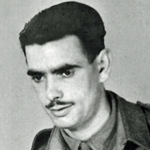
A personal account of the memories of Ted Stuart, No 5 Commando, who volunteered for Mission 204.
Combined Operations Bombardment Units
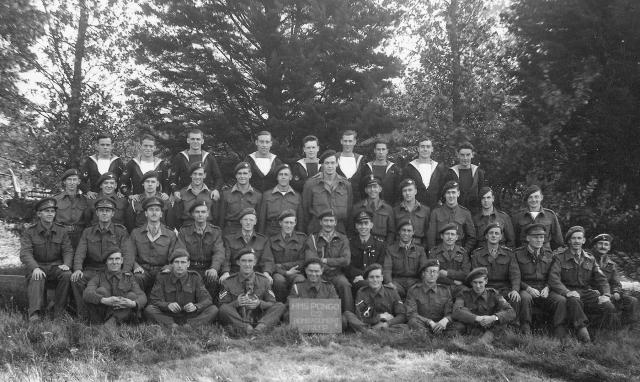
A Combined Operations Bombardment Unit (COBU) provided fire direction for ships in shore bombardment in WW2. The first COBU was formed in 1940 and by the end of the war there were five in existence. In 1946 all were disbanded, except No.2 COBU which joined the School of Combined Operations (later the Amphibious Warfare Centre) at Fremington. They were a mixture of men from different Services - Royal Artillery, Royal Marines, and the Navy. (Information from Stu Hart ex 29 Cdo)
View in our gallery some Photos of the COBU.
'Landing Craft Obstruction Clearance Units'
In the Normandy landings on 6 June 1944, Nos 7 and 8 were with Force S, Nos 9 and 10 with Force G, and 11 and 12 with Force J. They were all intended to clear paths through beach obstacles, but owing to the conditions of the tide and dangers from incoming craft the men were unable to use their shallow water diving gear, but nevertheless cleared obstacles. The Unit comprised of 120 men from the RN and RM including the RM Engineer Commando.
Team 7 under command of Lieut A.B. Jackson RM disembarked H +20.
Team 8 under command of CSM D.J.R. Morss RM disembarked H +20.
Team 9 under command of Lieut. D.J. Cogger RM disembarked H.
Team 10 under command of LSgt P. H. Jones RM disembarked H.
Team 11 under command of Lieut. D.J. Smith RM disembarked H +20.
Team 12 under command of LSgt. K.M. Briggs RM disembarked H +20.
'LCOCU title'
Confirmation from Admiralty Fleet Order A.F.O. 3440/45 page 14 of the correct unit title of the Landing Craft Obstruction Clearance Units (LCOCU).
'LCOCU image'
Men of the Landing Craft Obstruction Clearance Unit (LCOCU) changing into their shallow water diving suits before going in to clear explosives from a beach obstruction.
Photo © IWM A 28996 (non commercial use licence).
Sea Reconnaissance Unit
The SRU were part of the Special Operations Group within Combined Operations.
Allied Forces who operated with Commandos
These are just a few of the units from different countries that engaged in operations or training specifically with the Commandos. This does not include the troops that formed No 10 Inter Allied Commando as they were a specific unit of the Commandos and can be found in our WW2 Commandos section.
In our gallery we have numerous photos of Americans, Candians, and Greeks who operated with, or were trained by, Commandos.
We welcome more input regarding those individuals who served in this capacity.
United States of America
The members of the 1st Ranger Battalion were drawn in the main from two divisions that had recently been sent to Ireland from the U.S., the 34th Infantry Division and the 1st Armoured. In May 1942, Company A of the 1st Ranger Battalion was formed. All of the men were volunteers. They were moved to Scotland where they were trained under the instruction of British Commandos. Their commander was Captain William Darby. Some of them were among the first US troops to fight in Europe during the raid on Dieppe in 1942. Later they were expanded and trained to a battalion of 467 men. The US Rangers took part in the North African campaign Operation Torch, serving with Nos. 1 and 6 British Army Commandos. After this additional Ranger Battalions were formed along similar lines and took part in operations in all theatres of the war
LOUSTALOT, Edward Vincent
YOUNG, Leilyn, (American), letter about his time as a US Ranger.
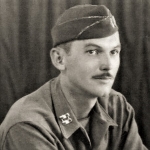
Leilyn Young, one of the first US Rangers to have Special Forces training by the new UK Commandos in WW2. Leilyn trained at the Special Training Centre, Lochailort, and then again at the Commando Depot, later renamed the Commando Basic Training Centre, Achnacarry. Both training centres were in Scotland, otherwise known as Commando Country.
This letter is a diary of events from when he left America, his arrival in Ireland, subsequent Commando training in Scotland, then onto North Africa. The letter was taken back to the USA by a returning fellow US Ranger. Leilyn Young not only went through a 4 week course at Lochailort in 1942 but also a 4 week course a few weeks later at Achnacarry with Colonel Darby and his other Rangers. This latter course ended on the 1st August 1942. Leilyn reached the rank of Colonel but was a Captain when this letter was written.
His niece Lisa McCollum recalls this about him " He was an incredible man, very soft spoken and one of the kindest and gentlest men I had ever met. I did not know him as well as I would have liked." Leilyn Young died on the 28th July 2004 and is buried at Arlington National Cemetery. Our thanks to Lisa McCollum for sharing her Uncle's letter with us
'American Rangers', Assault on Pointe du Hoc Battery
Transcript of a report by Lt Colonel Trevor.
Report details the landing of the US Rangers on DDay to assault the Battery. Source: David Cheverton, godson of Lt Col. Thomas Hoult Trevor (click on highlighted name for more.)American Rangers at Achnacarry image (1)
The caption reads:
American Rangers at Achnacarry image (2)
American Rangers at the Commando Depot, Achnacarry. Major Derek Burr later served as OC 4 troop No.5 Commando (ref. LL2/CA Newsletter).
The caption reads:
"Lt. Derek Burr of a Commando Depot stands behind four men of a Ranger unit whom he is instructing in the use of a M.1. Rifle.
(L-R): Pfc. Vernon Dougherty of Altoona, Pa., Pfc. Chas. Perachka of Mercer, Pa., Cpl. Alonzo Colds of Todd, N.C., and Cpl. Laurence Hickman of Bishopville, Md."
Date: 7 February 1943.
III-SC 180095, Credit The U.S. National Archives and Records Administration
Canada
W Party - Royal Navy Beach Commandos.
W Party were mostly Canadian Beach Commandos attached to the RN Commandos. They were specially trained Commandos set up to create and maintain order on Normandy's Juno Beach during the landings. Such was the uncertainty of what they would find that they trained for all conceivable contingencies from protection against chemical warfare and clearing obstacles to driving Sherman tanks! However, their main task was to keep the traffic of men, machines and supplies flowing through the beach area.
Greece
Greek Sacred Squadron
Formed in Palestine in 1942 from Greek Officers and cadets fighting at the time in the Middle East and originally under the command of Major Antonios Stefanakis. When its new commander Col. Christodoulos Tsigantes took over he changed the role to one of a Special Forces nature and they trained at the SAS base in Cairo. Also known as "Sacred Band" and increased in size to 400 men, the unit fought with General Leclerc's Free French forces in Tunisia, the SAS in the Libyan desert, and with the SAS and SBS in the Aegean. In 1944 it is increased to Regiment strength and put under the command of British Raiding Forces. It is involved in combat operations with the combined SAS/SBS raiding forces on the islands of the northern Aegean sea and the Dodecanese.
Notable among the many operations - July 1944 a combined Greek-British raiding force catures the German garrison on the island of Simi. Under Brigadier Turnbull's overall command, Lt.Col. Lapraik DSO, OBE, MC and bar [more....], played a leading role as OC of the British Special Forces (Force 142 a combined SAS/SBS force) involved. Throughout the months of 1944 and 1945 it continues in successful operations against the German garrisons on other islands. On the 7th August 1945 the unit disbands at a parade in Athens.
View on this link our Photos and documents about the Squadron.
Read the full history here The Sacred Squadron.
'Commandos in the Field 1945' - Combined Ops. Pamphlet 26
Prepared under the direction of the Chief of Combined Operations, March 1945.
Commando Battle Honours
"It is with great pride and pleasure that we are now able to report a successful conclusion to our enquiries, commenced over two years ago, about the possibility of the Association being granted Battle Honours. As the result of preliminary correspondence with the War Office, we received news in March, 1957, to say that approval had been given by Her Majesty the Queen for the award of Battle Honours to commemorate the services of the Commandos in the Second World War, and that, as a special case, claims could be submitted on behalf of the Commando Association.
The work was mainly organised, and claims compiled, by the General Secretary, and was co-ordinated under and during the term as President of Colonel A. C. Newman, V.C., O.B.E., T.D., D.L. After consultation with Brigade Commanders and Commanding Officers, our application was duly completed, and in October last an official notification appeared in the Press to the effect that thirty-eight Battle Honours had been awarded to the Association. The awards have since been confirmed, and appeared in List No. 11 of Battle Honours notified in Army Order 113 of 1957.
In the words of our President, Lt. Colonel J, M. T. F. Churchill, D.S.O., M.C., in his letter to all C.O s and O.C.A. Branches in October last, we hope that all members will feel satisfied with the Battle Honours we have been awarded, and that the relations of those killed in action will find in their proud and resounding names some consolation for their own tragic loss."
Here then are our Battle Honours for the war of 1939-45.
Vaagso, Norway 1941, Litani River, Syria 1941, North Africa 1941/3, North West Europe 1942, Djebel Choucha, Sedjenane 1, Dieppe, St Nazaire, Steamroller Farm Tunisia, Landing in Sicily, Pusuit to Messina, Sicily 1943, Landing at Porto San Venere, Termoli, Salerno, Monte Ornito, Anzio, Valli di Comacchio, Argenta Gap, Italy 1943/5, Greece 1944/5, Crete, Madagascar, Adriatic, Middle East 1941, 1942, & 1944, Normandy landings, North West Europe 1944/5, Dives Crossing, Flushing, Westkapelle, Rhine, Leese, Aller, Alethangyaw, Myebon, Kangaw, Burma 1943-5.
View our Gallery images here of the Laying up of the Commando Association Battle Honours Flag at Westminster Abbey on 1st May 1971.
Read on from below right ......
A timeline of Commando Training
The first call for volunteers for ‘Service of a hazardous nature’ was in the early months of 1940 and for the new Independent Companies. Many of these men went onto action in Norway almost immediately with little training. On their return Winston Churchill wanted his own Corps of ‘shock troops’ to start afresh. Lt Col Dudley Clarke, who was then Military Assistant to the Chiefs of the Imperial General Staff, is generally credited with the initial outline plan of their formation. His plan was approved and the name agreed on. Thus the ‘Commandos’ were formed.
A Combined Training Centre (CTC) at Inverary and a Special Training Centre (STC) at Lochailort (see above photo) had been established. The latter consisted of Nissen huts and tents, with the headquarters installed in Inverailort Castle, about 27 miles West of Fort William. A powerful team of instructors were gathered there, with many going on to became well known leaders of irregular forces, including the Chindits and Special Air Service, all being formed after the Commandos. The Instructors included Lord Lovat, Brigadier 'Mad Mike' Calvert, Colonel Spencer Chapman, Major Peter Kemp, and the Sirling brothers Bill and David.
Additionally other Officers and NCO's with a wide range of experiences from arctic exploring to rugged campaigning on the North West frontier of India, plus those well versed in signalling, demolitions, and shooting. Two of these Instructors were Messrs Fairbairn and Sykes of Shanghai Police fame. These two men, more than anyone else in the British Army were responsible for the introduction of unarmed combat and close quarter fighting.
From July 1940 Officers and selected NCO's from the newly formed Commandos attended STC courses, and then returned to blend the techniques and skills acquired with the other new ideas being developed within the training regime of their own Commandos.
The castle of Achnacarry, and the grounds, was the seat of Sir Donald Walter Cameron of Lochiel, Chief of the Scottish Clan Cameron, who in June 1940 had given hospitality to No. 1 Independent Company. In December 1940, Achnacarry, as well as nearby Achdalieu Lodge, were officially brought into use as part of the the new Training and Holding Wing for the Special Training Centre (S.T.C.) and remained as such for the next year.
A decision was made to centralise all Commando training at Achnacarry. In December 1941 Achnacarry was re-designated as The Commando Depot, and passed under the authority of the Special Service Brigade. The first courses began in the months of February/March 1942. Achnacarry was now the training centre for all Commandos in the UK and was still known as the Commando Depot but later re-designated as the Commando Basic Training Centre.
For Commandos already deployed overseas, additional training areas were set up including the Training and Holding Unit at Geneifa beside the Great Bitter Lake in the Middle East
The first Commandos were all Army Commandos. Twelve Army Commandos were raised in 1940 and had been involved in operations since then.
It was not until February 1942 that the first Royal Marine Commando unit was raised, initially designated as the 'Royal Marine Commando', then redesignated 'A' RM Commando when a second RM Commando was formed in October 1942, before finally being designated as 40 Royal Marine Commando, Royal Marines. Nine RM Commando units were in existence by the end of the war.
There were also Royal Naval Beach Commandos and RAF Servicing Commandos, and groups given Commando designations for a limited period or a specific purpose, some examples being No.14 Commando, No.62 Commando, and 142 Commando Company.
View a Roll of Honour of those who died at training centres: WW2 Training Centre Deaths
Read about the origins of the green beret here: History of the Commando Green Beret
Read about the origins of the fighting knife here: History of the Commando Fighting Knife
View a brief outline on this link to other Commando Training Centres from their formation until the present time.
- Donald Gilchrist, CBTC Instructor and author of Castle Commando.
- James Dunning, CBTC Instructor and author of It Had To Be Tough.
- Commando Veterans Archive Gallery
- The No 10 Independent Company War Diary
Read on from below right ......
'A document on the object of Special Service'
3. Mentally. The offensive spirit must be the outlook of all ranks of a Commando at all times.
4. Physically. The highest state of physical fitness must at all times be maintained. All ranks are trained to cover at great speed any type of ground for distances of five to seven miles in fighting order.
a. Fighting Order (seven miles in one hour (march & run).
b. F.S.M.O. (Full Service Marching Order)
5. Cliff and mountain climbing and really difficult slopes climbed quickly form a part of Commando training.
7. Seamanship and Boatwork. All ranks must be skilled in all forms of boatwork and landing craft whether by day or by night, as a result of which training, the sea comes to be regarded as a natural working ground for a Commando.
8. Night sense and night confidence are essential. All ranks will be highly trained in the use of the compass.
9. Map reading and route memorising form an important part of Commando training.
10. All ranks of a Commando will be trained in semaphore, morse and the use of W/T.
11. All ranks will have elementary knowledge of demolitions and sabotage. All ranks will be confident in the handling of all types of high explosives, Bangalore torpedoes, and be able to set up all types of booby traps.
12. A high standard of training will be maintained in all forms of street fighting, occupation of towns, putting towns into a state of defence and the overcoming of all types of obstacles, wire, rivers, high walls, etc.
13. All ranks in a Commando should be able to drive motor cycles, cars, lorries, tracked vehicles, trains and motor boats.
14. A high degree of efficiency in all forms of fieldcraft will be attained. Every man in a Commando must be able to forage for himself, cook and live under a bivouac for a considerable period.
15. All ranks are trained in first aid and will be capable of dealing with the dressing of gunshot wounds and the carrying of the wounded.
16. These are a few among the many standards of training that must be attained during service in a Commando. At all times a high standard of discipline is essential, and the constant desire by all ranks to be fitter and better trained than anyone else.
17. The normal mode of living is that the Special Service Soldier will live in a billet found by himself and fed by the billet for which he will receive 6s. 8d. per day to pay all his expenses.
18. Any falling short of the standards of training and behaviour on the part of a Special Service Soldier will render him liable to be returned to his unit.
Source: The document and history behind it is detailed in the book 'It Had to be Tough' written by the late Major James Dunning, a former TSM in No.4 Commando and Instructor at the Commando Depot (later renamed the Commando Basic Training Centre) at Achnacarry.
Read on from below right ......
'Commando Basic Training Centre'
The Commando Depot at Achnacarry, redesignated as the Commando Basic Training Centre (CBTC) in December 1943, was regarded as one of, if not, the finest of all the Allied special training centres established in the Second World War.
Its reputation was widespread and held in the highest regard by all the Allies, for not only were soldiers and marines of the British forces trained there, but also those from the USA, France, Holland, Belgium, Poland, Norway, and surprisingly, some Germans. These were the ‘Free’ Germans and included Jews who had escaped the tyranny in their own country. Many other Units also used the facilities of Achnacarry. A list of the Courses can be found in our Gallery here [Courses at the CBTC].
The grounds and castle of Achnacarry was the seat of Sir Donald Walter Cameron of Lochiel, Chief of the Scottish Clan Cameron, who in June 1940 gave hospitality to No.1 Independent Company.
Commando training was not centralised at this time with each individual Commando unit responsible for their own training. In December 1940, Achnacarry, as well as Achdalieu Lodge, were officially brought into use as part of the the new Training and Holding Wing* for the main Special Training Centre (S.T.C.) at Lochailort and remained as such for the next year. A Training Centre was also operating at Inverary.
STC Lochailort was however scheduled to be closed. A need had been seen to centralise all commando training with a Commando Course that everyone would have to pass. Thus in December 1941 Achnacarry was re-designated as the Commando Depot, and passed under the authority of the Special Service Brigade.
Around the drill square hard asphalt now replaced the green lawn of the Castle. This square was surrounded by austere Nissen huts with their corrugated iron sides and roofs. These were the accommodation huts, each housing between 25 and 40 men, and also used as dining 'halls', washing rooms, and the NAAFI canteen. Occasionally these were complimented by Bell tents when additional accommodation was required. The Commando Depot at Achnacarry became the centre of all commando training.
In his book "It had to be Tough" Major James Dunning, who served on the staff at the CBTC for a period, states the following, "Normal intakes of trainees were allocated to one of the three training Commandos: Keyes, Haydon or Sturges, named after pioneers of Combined Operations and the Commandos. Admiral Sir Roger Keyes, our first beloved boss, and his son Geoffrey, who won the first Commando VC; General Haydon, the original commander of the Special Service Brigade and leader of the Lofoten Islands Raid; General Sturges, a Royal Marine, who after the Madagascar operation became the first overall commander of the Commando Group of four Commando Brigades.
Much of the PT consisted of agility and strengthening exercises, and teaching the drills and skills of tackling obstacles. All the equipment and obstacles were home made at Achnacarry by the staff. The photo depicts trainees using logs, each about 15-20 feet long, as part of that training. The logs were heaved, hurled in the air, and caught in a variety of different improvised strengthening exercises, demanding in addition, plenty of team work and cooperation.
More can be read about other areas of training in the pages to follow.
It would be remiss not to mention more about the man tasked with organising and controlling such demanding training, Lieutenant Colonel Charles Vaughan. Major Jimmy Dunning, No.4 Commando and CBTC, wrote " A Veteran of the First World War and the Retreat from Mons in 1914. In the inter war years he graduated from Drill Sergeant to RSM, but he was much more than just a bawling barrack square man, although he could do that if needed. His obvious military potential as an officer was recognised and he was duly commissioned.A Londoner by birth and proud of it, Lieutenant Colonel Vaughan's standards for soldiers and soldiering were set by his long service in war and peace. He accepted nothing but the best, whether it be in fitness, training, weaponry and musketry, fieldcraft and tactics, drill and turnout, or even in the more apparently mundane matters of administration which included feeding and hygiene.
Together all these factors made the 'whole' - and the self disciplined and reliant Commando soldier 'fit to fight' and 'fighting fit' with high morale, willing and capable of tackling any military task, under any circumstances, and against any odds."
Primary Sources: Donald Gilchrist, CBTC Instructor and author of Castle Commando; James Dunning, CBTC Instructor and author of It Had To Be Tough; Hilary St. George Saunders author of The Green Beret (The story of the Commandos 1940-1945.); No 10 Independent Company War Diary National Archives ref. WO.218/17]
© Commando Veterans Archive 2014
* Follow this link to read the No 10 Independent Company history. [relevant to the early timeline.]
Follow this link to view the dates of Course Intakes at Achnacarry.
Read on from below right ......
VAUGHAN, Charles Edward (Lt Col)
Charles Edward Vaughan, born 1893, was originally attached to No.7 Commando. The then Major Vaughan took over as Acting Second in Command of No.4 Commando on 30 June 1941 replacing Major M.G. Kerr before taking up his role as the Commandant of the newly formed Commando Depot (CBTC) at Achnacarry.
On June 6th 1964 during the ceremonies in Ouistreham commemorating the 20th Anniversary of the D Day Landings, the Commando Memorial window at the church of St Sampson was unveiled by Lieut. Colonel Vaughan. The window had been donated by the Association to the people of Ouistreham as a token of appreciation for their continued hospitality and kindness to Commando Veterans attending D Day Anniversaries. In January 1965 Lieut. Colonel Charles Vaughan OBE represented the Association at the funeral service in St Paul's Cathedral for Sir Winston Churchill.
Donald Gilchrist author of 'Castle Commando' wrote :
Read on from below right.....
COCKCRAFT, William Gordon La Trobe
- The IWM have an Oral Interview (catalogue number 3935) recorded with Major William Gordon La Trobe Cockcraft covering the period he served with the Royal Berkshire Regiment and the training of the 4th Bn King's African Rifles in Uganda, Kenya and East Africa, 1938-1942. (He received a Mention in Despatches for distinguished service during this period*). At the very end of the last reel (reel 2) Major Cockcraft states he left them to volunteer for the Commandos [3] .
- 13 August 1949 Major Cockcraft retired from service [4].
'Lt. Col. Vaughan confers with his 2 i/c, Major Cockcraft', image
[Caption] "Lt. Col. C.E. Vaughan, Commandant of a Commando Depot confers with this Second in Command, Major Peter Cockraft* on the day's schedule for a Ranger Unit. Speanbridge, Scotland."
CBTC Demonstration Troop
CBTC Pipe Band and Demonstration Troop
- More photos in our Gallery [view.....].
Arrival at Spean Bridge Railway Station
Read on from below right ......
'Commando Dark Mile training areas'
A good map of the various locations of training described on our archive.
Read on from below right ......
'Boat Training at Bunarkaig'
The Commando Boat Station at Achnacarry was on Loch Lochy at Bunarkaig. A small fleet of various craft was assembled for training in basic seamanship and landing drills. Amongst this armada were whalers, cuters, landing craft, dorries, canoes, rubber dinghies, kapok bridge rafts, and collapsible Goatleys. They were all stored in or moored alongside a little stone boathouse. Instruction began with a short film on the role and functions of Combined Operations, and the various craft used for training and operations.
Elementary watermanship in the folding boats, canoes, and rubber dinghies followed with the correct handling and use of paddles and oars for steering and propulsion.Once these fundamentals had been mastered it was onto the normal craft for operational landings, the assault landing craft, concluding with the opposed landing.
The Boating Officer from 1943-45 was a Royal Marine officer, Jim Keigwin, a most competent and first class instructor, and an excellent organiser, with his fleet ever ready and in good condition.
The night assault landing is described by Donald Gilchrist in his book Castle Commando as " By far the most spectacular of all the Achnacarry training schemes." He goes on to say that it was as close to battle conditions as they could get without actually slaughtering half the trainees.
The trainees were loaded into boats at Bunarkaig, they then rowed or paddled - depending on the type of boats employed - across the waters of Loch Lochy, and carried out a mock attack against a heavily defended section of the shore of the Loch.
It may have been a mock attack but was certainly not a mock defence. The attack route was carefully planned and determined. Any deviation from it would put the trainees in grave danger. They were confronted by an arsenal of weapons manned by an army of instructors skilled in the Achnacarry art of shooting to miss - but not by very much". There was no blank ammunition used. "The weapons of defence, from the mortars to the rifles, spatout live stuff - and spat it out in vast quantities".
Sources: The late Donald Gilchrist, CBTC Instructor and author of Castle Commando and James Dunning, CBTC Instructor and author of It Had To Be Tough
© Commando Veterans Archive 2014.
Read on from below right ......
'Cliff Assaults' Combined Ops Pamphlet 24
'Commando Mountain Warfare Training Centre' (CMWTC)
Initially formed at Braemar in Scotland in December 1942 and called the Commmando Snow and Mountain Warfare Training Centre. The Commanding Officer was Squadron Leader Frank Smythe, an accomplished mountaineer. Its role was to train Commandos to fight in high snow covered mountain territory. After 6 months the unit moved to North Wales and assumed a different role including the training of Lovat Scouts as a Mountaineer Battalion.
At the end of 1943 the unit again moved this time to St Ives and again its role changed to one of training Commandos for cliff assaults as part of the training for the forthcoming D Day landings. On the 9th September 1946 the centre was renamed the Commando Cliff Assault Centre RM (CCAC). [1]
Several ex Army Commandos such as Jimmy Dunning were 'seconded' to the Royal Marines for their respective roles at the centre. The centre at St Ives finally closed in 1950.
Sources [1] RMRO 1135 dated 5th Sept.1946.'C.M.W.T.C History 1943-45'
This document has a brief history of the Commando Mountain Warfare Training Centre (C.M.W.T.C) with a nominal roll from 1943 to 1945. It was prepared for a C.M.W.T.C. commemoration dinner on 30 November 1945. If the document does not load immediately in the viewer, refresh this page, or download from above.
A reunion of the CMWTC at St Ives
This is an account of a Commando Mountain Warfare Training Centre reunion held at St Ives on the 24-26th September 1993 as outlined in Commando Association Newsletter 98 of March 1994.
"This Reunion, held over the weekend 24th-26th September, was an unqualified success, and, congratulations are due to the hard work put in by Slim Sutherland, Jim Smith, Peter Dietz, Mike Banks, Ken Broom, Jack Hunter and C/Sgt. Tony Boyle (currently serving with RM Mountain and Arctic Warfare Cadre) were well rewarded. The purpose of the reunion was to commemorate the 50th Anniversary of the original Commando Mountain Warfare Training Centre's (CMWTC) move from Llanwryst to St. Ives in 1943 and for all those commando comrades who subsequently served there during the period 1943 to 1950. As such, it was, of course, a unique reunion, including not only wartime members of our own Commando Association, but also those post-war RM Commandos of the Commando Cliff Assault Centre (CCAC) and its Successors. As a result, it was natural that the number of original CMWTC veterans would be outnumbered by latter day RM Commandos. This was inevitable, but only enhanced the occasion and provided evidence of continuity.
Unfortunately, because of ill-health, neither Geoffrey Rees-Jones, a pioneer Commando climber who commanded CMWTC when it moved to St. Ives, nor the legendary Commando climber, Capt. Joe Barry, were able to attend, but two others of that move 50 years ago were, Major Jim Fraser who also commanded CMWTC and CSM George 'Dickie' Dicks, BEM. One of the features of the weekend was a demonstration by today's direct descendant of CMWTC, the RM Mountain and Arctic Warfare Cadre, They put on impressive demonstrations of abseiling from a helicopter and a cliff assault.
On Saturday evening, the main event of the re-union, the official Dinner for the ex-Commandos and their families, was held in the St. Ives Rugby Club. Just on I00 comrades and guests sat down to the meal. Piper Bill Millin was in attendance. As guest of honour, Major Jimmy Dunning, who was the last Adjutant of the CMWTC, and subsequently on renaming, the first Adjutant of the post-war CCAC, recalled the unique spirit of the unit that survived the traumas of the 'demob-happy' days of 1945 - 46 and the fight that Major Easton, MC (then CO) had to ensure that the techniques of Commando climbing and rocky landings were preserved by the survival of the unit in peacetime. He also recalled 'Commando Week', June, 1946, when the unit appealed to the locals and holiday makers through a week-long series of events for £1,000 for the Commando Benevolent Fund. He reminded his listeners that they succeeded in raising that sum, which today equates to at least £125,000. Not a bad effort for a Unit of about 50 all ranks.
The weekend reunion ended with a simple but moving open-air service at St. Nicholas Chapel, the Island, St. Ives, and this was conducted by the Revd. Richard Baxter, who in 1945 - 46, served in CMWTC. Among those who attended were Capt. Mickey O'Brien, who flew in from Malta and Glyn Vaughan, who made the long journey from Australia."
Read on from below right.....
Training Centres WW2
'Courses at CTC Inveraray'
Courses for the Special Service Brigade and SCU.
Date |
Units Trained |
| Oct '40 | 3, 4, 6, & 8 Commandos |
| Nov '40 | 7 Commando |
| May '41 | 1, 2, 3, 9, & 12 Commandos |
| Apr '42 | 1 Servicing Commando RAF |
| May '42 | 3202 & 3203 Servicing Commando RAF |
| Aug '42 | Two RAF Servicing Commandos |
| Sept '42 | 2 Commando 1st, 2nd, & 3rd Bn's. 168 Regt. 168 US Combat Team 1st, 2nd, & 3rd Bn's 26 Regt. 26 US Combat Team |
| Mar '43 | 5 RAF Commando |
| May '43 | 3205 & 3206 Servicing Commando RAF |
| Jun '43 | 3207 & 3208 Servicing Commando RAF |
| Jul '43 | 3209 & 3210 Servicing Commando RAF |
| Jun '44 | 1, 2, & 3 Independent Mountain Company Norwegian Brigade Independent Para Company Norwegian Brigade |
Read on from below right.....
Commando Basic Training Centre Staff, Achnacarry,1945
Commando Basic Training Centre Staff, Achnacarry,1945
A newspaper article by Capt. Donald Gilchrist
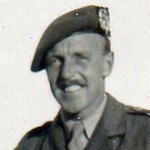
This article on WW2 Commando training written by Captain Donald Gilchrist, No.4 Commando and CBTC Instructor, was published in the Oban Times and Argyllshire Advertiser 8 November 1990.
FILM 'The Story of the Green Beret
An hour long film made for the Admiralty in 1945, this is a drama-documentary covering Commando training in Wrexham, Achnacarry and St. Ives. Fascinating archive footage shows wartime Commando units on amphibious assault exercises, perfecting cliff-top assaults and practicing both armed and unarmed combat techniques.
As said above the film was made for the Admiralty. The viewer should be aware that the first Commandos formed in 1940 were in fact all Army Commandos. It was not until 1942 that the first two RM Commando units were raised, followed by 5 more in Aug 43, with the last being raised in 1944. In 1946 all the Army Commandos were disbanded, along with five of the eight RM Commando Units. It would not be until many years later that Army Commandos would return to support the RM Commandos of 3 Commando Brigade.
If you have come to this film page first and want to know more about the history of the training, then go the start of the Commando Training section HERE.
Read on from below right.....
'Achnacarry Christmas 1945'
After a brief spell "off the record" we again present the latest news. We have said farewell to our late Commandant, Lt. Col. A. G. Komrower, D.S.O., Lancashire Fusiliers, and simultaneously had the pleasure of welcoming our new Commandant, Lt. CoL Martin Price, D.S.O., R.M. Our comrades-in-arms, the Army Commandos, have also left the Centre and we are at present in the throes of the great changeover.
Read on from below right.....
Army Commando disbanding
Major Wyatt asked the Secretary of State for War whether he has any statement to make on the future of the Commandos.
Mr. Lawson, Secretary of State for War
The Army Commandos were formed in 1940 for the only kind of offensive operation that we were then able to undertake. During the years of preparation, before the assault on the Continent in 1944, the Commandos were used in many raids and attacks on the enemy-held coasts. Their tasks did not cease with the invasion of Europe, for they took part in many operations until VJ Day, and they have seen service in Burma and on almost every front in this war. The manpower commitments of the Services must, however, now be greatly reduced and it is impracticable for the Army to retain in peace-time specialised units such as the Commandos. But although the Army Commandos are now to be disbanded the lessons which they learnt and the technique which they perfected will be incorporated in the Army training of the future.In addition, a certain number of Commando units will be retained in the Royal Marines, who have themselves furnished during the war half the strength of the Commando force, and who are so fully qualified, by their long tradition and history, to carry on the special role which the Commandos have performed in the war. I take this opportunity of paying tribute to the gallant officers and men who have served in these units.
Police Volunteers
3rd Police Intake - 15 October 1942 to 18 January 1943, total 84.
ALEXANDER, Charles Henry
ALMONDS, John Edward
ANDERSON, Barrie Sherwill Norman
ANDREWS, Alfred Archley
- 12.10.1936 joined the Metropolitan Police, warrant number 125297.
ANSELL, Arthur James
ASHTON, Colin William
ASHWORTH, James Kenyon
AUSTIN, Selwyn Ronald
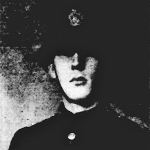
BAGOT, Henry Hunter
BAINES, William
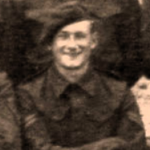
BAKER, Albert
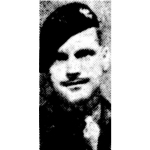
BAKER, Herbert Valentine
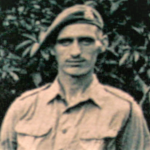
BAKER, Kenneth Claude
BALE, John Henry
BALL, Percy William
BALLANTYNE, George
BARDENS, John Henry
John Henry Bardens was a Police Officer from Plymouth who volunteered for the Commandos enlisting 6 June 1942 joining the 2nd Police Intake to the Commando Depot (Commando Basic Training Centre), Achnacarry.
BARLOW, Jack
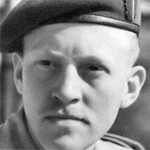
BARNES, Norman Alfred George
BARNES, William Walter
BARRASS, Nicholas William
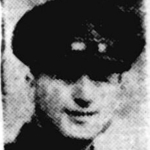
BARTLETT, Brian Viner
BARTON, Leslie James
BATEMAN, Walter
CWGC.
BEARNE, Robert Stanley
BEATTIE, James Simpson
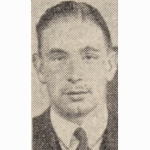
BEAVER, Stanley
BENNION, Thomas James
BENTLEY, Charles
BENTLEY, Donald
BERRY, James Arthur
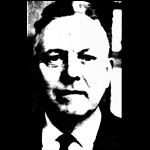
BETTY, Arthur John
BIDDISCOMBE, Edward
BINNIE, John
BISHOP, Arthur
BISHOP, Frederick Walter
BISSELL, Stanley
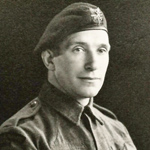
BLAKEMAN, Albert John
BOOTH, William Martel
In 1939 William Booth was an Essex Constabulary Police Constable based at South Street Police Station, Romford. He volunteered for the Commandos in 1942 as part of the Police Intakes to the Commando Depot (Commando Basic Training Centre), Achnacarry.
BOWDEN, Cedric
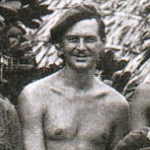
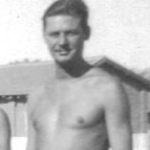
BOYES, Robert Paul
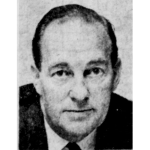
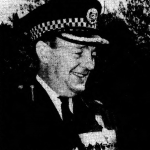
BRADLEY, John Percy
BRIDLE, Desmond George
BROUGH, William Gordon
BROWN, Bruce Ian Murray
BROWN, Gilbert
BROWN, Kenneth Sidney
BRUNT, Morris Raymond
BRYANT, Joseph Harry
BUCKLAND, Reginald Arthur
Reginald Arthur Buckland joined the Metropolitan Police on 2 September 1939 as a Special Constable and subsequently became a War Reserve Constable.
BUNT, Reginald Melford
BURDEN, Stanley Percival
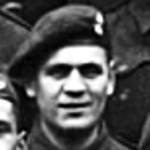
BURKE, Edmund
BURNHAM, Joseph Charles
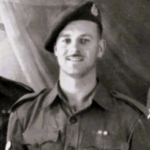
BURNS, Norman
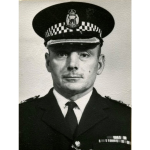
CALLAGHAN, Dennis
CAMPBELL, A.
CAMPBELL, Thomas
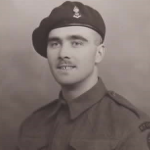
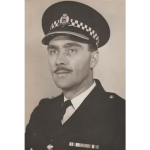
CANT, Evelyn Arthur George
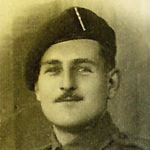
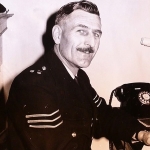
CAPP, William Thomas
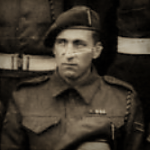
CAPPLEMAN, John
CAPSTICK, Norman
CARRICK, George
CARTER, Donald Arthur
CARTWRIGHT, William
CASLIN, Patrick Gerard
CASSIDY, Maurice Francis
Sergeant Cassidy was wounded 14 July 1943 during operations at Agnone, Sicily, and the bridge at Malati (3 Commando Bridge). He was initially attested into the Royal Artillery before the war until discharged 11 March 1938.
CHAPMAN, William Jopp
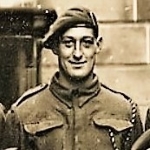
CHEETHAM, Gerald
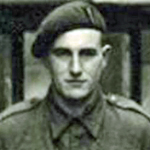
CHESTERS, William
CHITTY, Wyndham Roland, G.P.
CLARKE, Hilary Laurence
CLARKE, Patrick Joseph
CLARKSON, George Francis
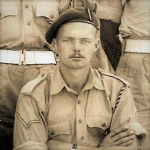
CLEMENTS, Albert Edward
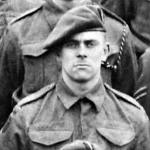
Private Albert Clements served in 1 Troop and was injured in 1943 during training at Gibraltar after which he was evacuated to the UK for treatment.
COBLEY, Victor Charles
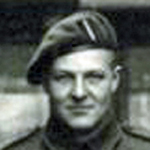
COKER, James Thomas
COLEMAN, Lloyd William
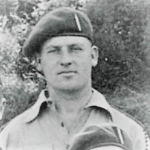
CONWAY, John Alphonsus
COOK, Kenneth
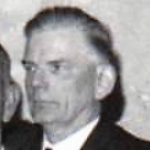
COOKSON, Charles
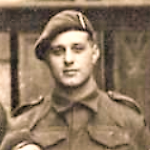
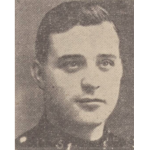
COOPER, Dudley Edward
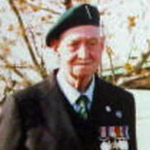
COOPER, George
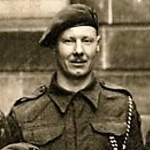
COULSON, John Richard
COULTHARD, Arnold Crone
COWLES, Percival Victor Arthur
COX, Cecil Ernest Robert
CRABTREE, Ben
CRAIG, John
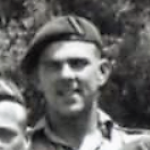
CRAIG, Robert
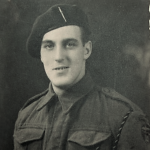
CRAIG, Robinson Ostle
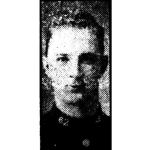
Private Robinson Craig was killed in action at Dragone Hill, near Vietri, Salerno. He was buried there the following day, his grave being marked with a cross. However it was never again found and Private Craig is one of the many who now have no known grave.
CROSS, Swinford Joseph
CROWE, Edward Louis
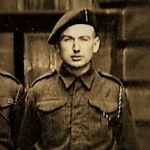
CUNNINGHAM, Stephen
DAVID, Douglas William
- 9 February 1939 joined the Metropolitan Police, warrant number 125614. Later resided at Blackheath Police Section House, Greenwich, SE10.
DAVID, Gordon Percy
DAVIDSON, Douglas Oscar
DAVIES, Arthur Henry William
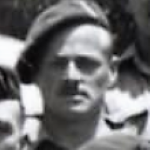
DAVIES, Leonard
Private Len Davies served in 5 Troop and later the H.Q. Section. He was a serving Police Officer in Barrowford who volunteered for the Commandos as part of the Police Intakes in 1942.
DAVIES, William Leslie
DAVIES, Wyndham Francis
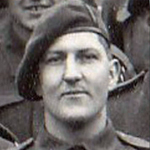
DAVISON, John Cyril
DAW, Herbert Frank
DELL, Charles Richard
DENHAM, Joah Selwyn
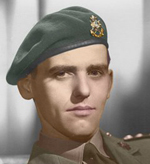
DENNIS, Thomas Gerald
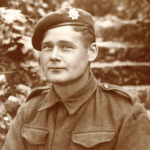
DENT, John
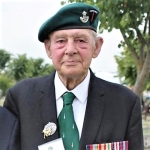
DICKINSON, John Leonard
DIGHTON, Derrick John
DOCKERILL, Graham Dennis
DOLBY, William Arthur Watkins
DRAPER, Bertie William
DRIVER, John
DRURY, Thomas
Private Thomas Drury served in the HQ Troop Motor Transport Section. He was a serving Police Officer who volunteered for the Commandos as part of the Police Intakes. In 1939 he was a Police Constable residing in Dewsbury.
DUNFORD, Edwin
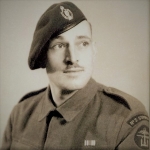
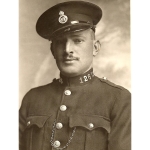
DUNKLEY, Eric Cambrai
EADS, Peter
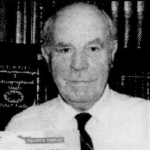
EARL, Dennis Victor
EAST, Gerald Thomas
EGLETON, Sydney Oswald
ELMS, Frank
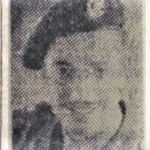
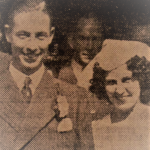
ENNIS, James Francis
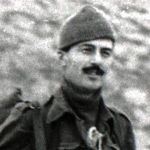
EVANS, Arthur Walter
EVANS, Goronwy Wyn
EVANS, Gwilym
Private Gwilym Evans was reported missing 14 July 1943, later presumed killed in action, during operations at Agnone, Sicily, and the bridge at Malati (later called 3 Commando Bridge). Son of Daniel and Gwen Evans, of Porth, Glamorgan.
EVANS, Leslie Daniel
EVERETT, William John
FANTHAM, Maurice
FEATHERSTONE, Charles Roland
FERRIE, James Eglinton
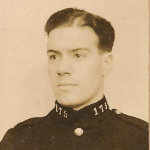
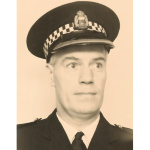
FLETCHER, Edmund Frederick
FLETCHER, John Harold
FORSYTH, William John
FRASER, John George
18.07.1932 attested into the Scots Guards aged 18, civil occupation Labourer. Military service included deployment to Egypt.
22.12.1936 transferred to Army Reserve to join the Police.
FROST, Sidney Edward
FRY, William Charles
GALE, William S.
Private William Gale was wounded on 13 July 1943 during operations at Agnone Sicily and the bridge at Malati (3 Commando Bridge).
GAMESTER, Frederick Walter
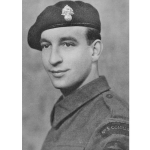
GARRETT, Albert Charles
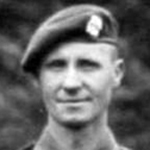
GARRETT, William John Stanley
GELDERD, John
GELSTHORPE, Gladwin
GILL, L.M. (Len)
GILLINGS, Leonard Richard
GODDARD, Alfred
GRANT, Archibald Campbell
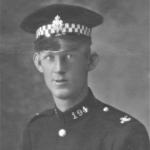
GRANT, James
GRAY, Reginald Halliday
GREALEY, Thomas Louis
GREER, J.C.
- 15 November 1944 (Guardsman) (Scots Guards) wounded in Italy [2].
GRIEVE, John
GRIGG, Eric Alfred
GROSE, Reginald George
- 1939 Police Constable residing at 162 Stanhope Street, Camden.
- 27 June 1941 awarded the George Medal.
GROVE, Ronald
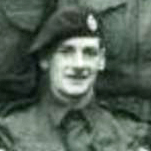
HACK, Ronald Roger Louis
HADDOW, David Foster
HALLIDAY, Bernard Neil
- 02.01.1939 joined the Metropolitan Police.
HANTON, James Reith
HARDY, Eric Arthur
HARRISON, Ivan
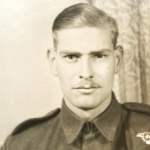
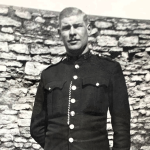
HARRY, John Grismond
HENDERSON, Walter Hector
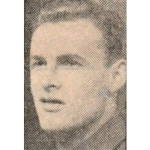
HENDRY, William
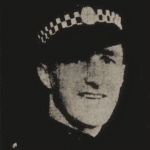
HERN, Gordon
HERSTELL, Ernest Maxwell
HEWITT, Albert John Henry
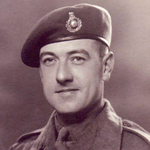
HEWITT, Denis Story
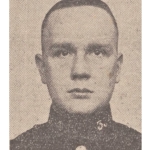
HILL, Arthur Charles
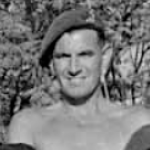
HILL, Eric Albert
HILL, Harry Leslie
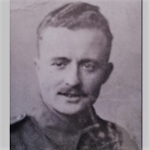
HILL, R.
HILLIARD, James Johnstone (record query)
03.04.1939 Police Constable serving at Gosport Police Station.
15.01.1941 serving at Fareham Police Station.
HINES, Arthur Edward
HODGES, William Albert
HOLLAND, James
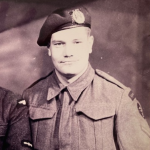
HOLLINGWORTH, Leslie
HOLMES, Kenneth Samuel Buller
HOLT, A.
HOOPER, Samuel Lyndon
HORSFIELD, Harry
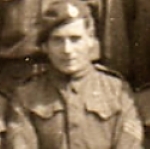
HOUGH, Richard
Sources
HOUGHTON, Walter Roy Fairley
HOWARD, Edward John
HOWELLS, William James Cyril
HOWSON, William
HUMBLE, William McLean
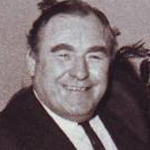
HURLEY, Philip
IMRIE, Bruce Berriff
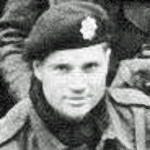
INNES, James Fraser
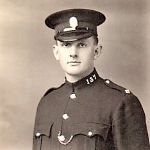
Privates James Innes was wounded on 5 October 1943 during operations at Termoli, Italy. He was a Police Officer in Larbert who volunteered for the Commandos in 1942 joining a Police Intake to the Commando Depot (Commando Basic Training Centre) at Achnacarry.
IRVING, Robert Anderson
IVES, Arthur Christopher
JACKSON, Colin
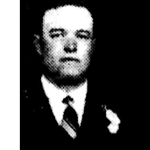
- 20 September 1938 joined the Police Service.
- 1939 single and a Police Constable residing at 191 Shelley Road, Preston.
JACKSON, Ernest Stanley
JACKSON, Herbert
Lance Sergeant Herbert Jackson was wounded on 24 March 1945 (remaining on duty) during operations to cross the River Rhine at Wesel and again on 11 April 1945 at the River Aller.
JARVIS, Joseph Augustus
JENKYNS, Lionel Victor
JOHN, William, H.
JOHNSON, Henry Horace
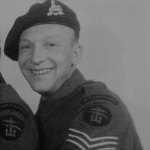
JOHNSON, Herbert
JONES, Anthony Windsor
JONES, George Edward
JONES, Kenneth Edwin
JONES, Thomas Ellis
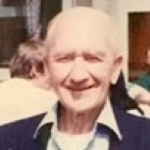
JOSS, James
KEERY, William James
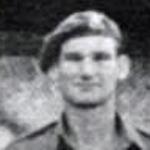
KELLY, Brian Bernard
KENDRAY, Harold
KENNEDY, Albert

KENT, Frederick, P.
KIRBY, William John
LAMBERT, Peter Laurence
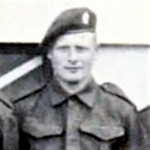
LAMKIN, Sydney James
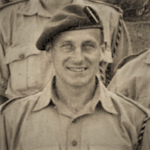
Fusilier Sydney Lamkin, a Metropolitan Police War Reservist, volunteered for the Commandos and was part of the 1st Police Intake to the Commando Depot (Commando Basic Training Centre) at Achnacarry. He was attached to No.2Commando and served in the Heavy Weapons Troop.
LANGLEY, Percy
LATHAM, Leslie James
LEEMING, William Cedric
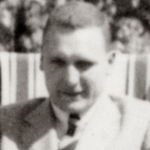
Troop Sergeant Major William Leeming died during operations at Rots and Le Hamel, France. Son of William Herbert and Alice Leeming, of Dublin, Irish Republic.
LEES, Archibald
LESSONS, George Sutherland
LEWINGTON, Leslie John
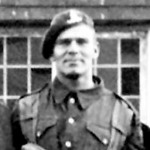
LEYLAND, Alexander James
23.07.1942 joined the 2nd Police Intake at the Commando Depot (Commando Basic Training Centre), Achnacarry. Posted to No.4 Commando. Served in 'B' Troop*.
LITTLER, Ronald
LLOYD, Edmund John
LOASBY, Ronald William
LOCKWOOD, Frank
LOGAN, Frederick James
- 2 September 1939 Frederick Logan became a Metropolitan Police War Reserve Constable and in 1942 he volunteered for the Commandos.
LOGAN, Thomas Alex
LOVELL, Ronald Ernest
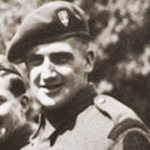
MACGOWAN, Sydney James Watt
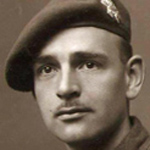
MACKENZIE, Roderick Gimson
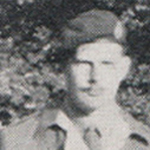
MADRA, Robert Peter
MAHAN, Robert McKenna
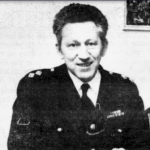
MANLEY, Frederick, Reuben, W.
- 6 June 1944 wounded (remaining on duty) on 6 June 1944 at Normandy, France [1].
MANNING, Frederick
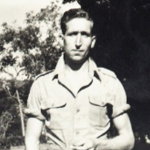
Corporal Frederick Manning, a Police Officer from Kent, was one of the Police Intakes to the Commandos commencing his training 15 October 1942. He served with No.5 Commando in the Far East and post war resumed his service with the Police.
MARRON, Austin
MARTIN, Donald Hugh
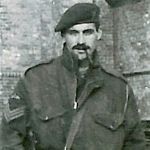
MASSEY, Albert William
MATHER, Ernest Griffith
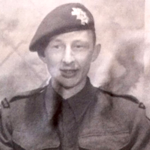
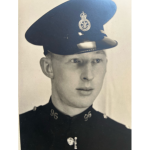
MCCUBBIN, Duncan Stuart
MCDAID, Francis
MCDONALD, Robert Stewart
MCDOUGALL, William Lawrence
McELVEEN, Thomas Edward
MCIVER, Geoffrey Donald
MCKAY, Alec
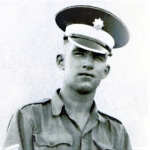
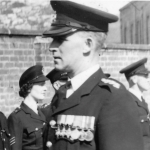
MCPHERSON, MacIntyre Wilson
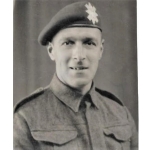
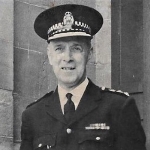
MEDDINGS, Sidney William
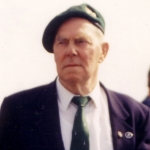
MEEK, Angus
MELLARS, Vivian Roy
MILBURN, John
MILBURN, Ridley
MITCHELL, William
MITCHELL, William Henry
MOFFAT, Robert Tweedie
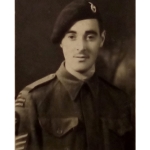
MOLD, Herbert John
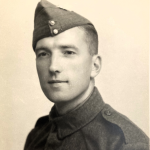
MONEY, Douglas Anthony William
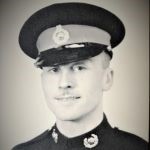
MORGAN, Albert Stuart
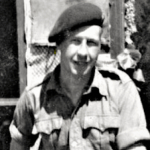
MORRIS, Charles Henry
MORRIS, Leonard Christopher Hugh
MULLARD, Sidney John
MUNNS, Leonard Cyril
MYNHEER, Frederick Robert Charles
NAYLOR, Howard
NEALE, Arthur
NEWBY, Kenneth
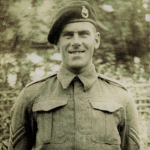
NICHOLAS, John David
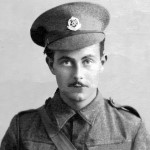
June 1940 attested into the Corps of Military Police.
April 1941 transferred to the Infantry Training Centre (Welch Regiment).
15 April 1941 posted to the Auxiliary Units.
NICHOLSON, James
NICOLSON, Angus
O'SHEA, James Andrew
OLIVER, Matthew Dudgeon
OLIVER, Roland
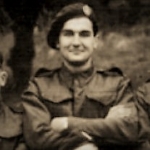
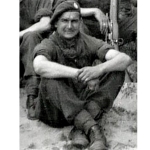
OSTICK, Ernest
OVENDEN, Roderick Joseph
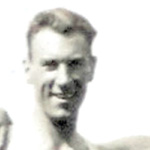
PAGE, Thomas Harold
PALFREY, Edward Francis
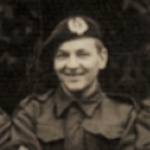
PALMER, Frederick
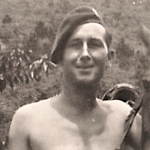
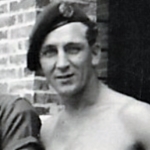
PANTALL, Richard William White
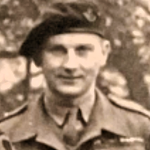
PARISH, Kenneth Peter
PARKER, Robert John
Guardsman Robert Parker was reported missing 26 February 1943 in Tunisia, North Africa (Battle for Steamroller Farm), later found to be wounded and a prisoner of war.
PASK, Douglas
PAUL, Haydn Bertram
PEARCE, Kenneth
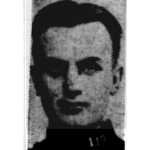
PEARSE, George
PETKEN, William Henry
PHILLIPS, Hedley Joyce
PHILLIPS, Norman Arthur Firth
- 1939 employed as a Clerk at the Education Offices, Bath.
PICKTHALL, Gerald
09.06.1941 joined Liverpool City Police as Constable 103F.
POCOCK, Thomas Charles
PORTWAIN, Edward
POWER, John Francis Finbar
PRATT, Henry
PRICE, David Elvet
PULESTON, Geoffrey Frank
RAMAGE, James Burns
RAMSDEN, Harry
RATTLE, Jack Ernest
REEVE, Stanley Richardson
RENSHAW, Victor Ernest

RIDGE, Thomas William
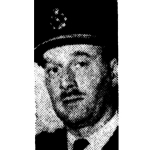
RILEY, Charles George Gibson
RILEY, Hugh
ROBERTS, Charles Edward James
ROBERTS, Donald Leslie
ROBERTS, Edwin Albert
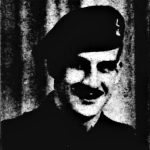
ROBERTSON, George
ROBINSON, Christopher Thomas
Volunteered for the Commandos from the Police. Joined the Royal Marines on 22 September 1922 (CH/X 111542). Returned to the Leicester Police after the war.
ROLFE, Charles Kenneth
ROSTANCE, James, H.F.W.
RUSHTON, Edward Gordon
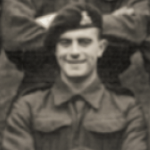
Edward was a Police Officer in Lancashire who had volunteered for the Commandos as part of the Police Intakes. In 1939 he was a Police Constable residing at 12 Crabtree Street, Colne.
SALISBURY, Frank
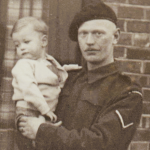
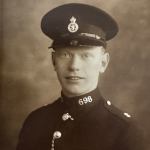
SAVORY, Dennis
SEARLE, Clifford Frederick
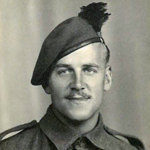
SIGSWORTH, Stanley
SMART, Albert Kenneth
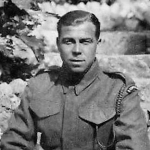
SMITH, George Alfred
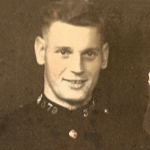
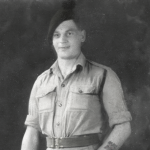
SMITH, Miller
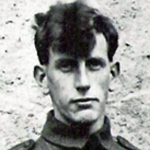
Company Sergeant Major Miller Smith, a former Police Officer, was one of seven men from No.2 Commando captured after Operation Musketoon and later executed at Sachsenhausen Concentration Camp under Hitler's Commando Execution Order.
SNADDON, John
John Snaddon was a Fife Constabulary police officer who volunteered for the Commandos in 1942 joining a Police Intake to the Commando Depot (Commando Badic Training Centre) at Achnarry. Lance Corporal Snaddon, No.5 Commando 4 troop, was wounded in 1944 during operations in Burma.
SPINKS, Edward George

STACK, William John
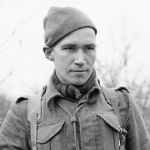
In 1939 William Stack was a Police Constable based at Central Police Station, Cheltenham. He volunteered for the Commandos in 1942 as part of the Police Intakes to the Commando Depot (Commando Basic Training Centre), Achnacarry. He was posted to 5 Troop after joining his commando unit.
STANSFIELD, Stewart Milsom
STARLING, Alfred Michael Prestwood
- 1939 Police Constable residing at 29 Carlyle Road, Birmingham.
STORER, Sidney
STROWGER, John Dunkirk
John Strowger was a Metropolitan Police Officer who volunteered for the Commandos. In 1939 he was a Police Constable serving at Croydon Police Station, London. Post war member of the Commando Association.
TANNER, John Andrew
Corporal John Tanner was killed in action on 15 April 1945 during operations at Lake Comacchio, Italy. The previous year on 20 March 1944 he was wounded (recovered) during operations in Italy.
TAYLOR, Thomas Alfred
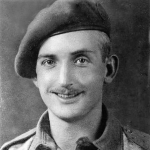
TAYLOR, William Ronald
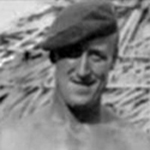
TENNICK, Maurice William
TEVENDALE, Lewis Legertwood Legg
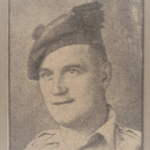
TEWKESBURY, Edward Frank
THOMSON, John, D.
John Thomson was a serving Police Officer who had volunteered for the Commandos as part of the Police Intakes. In 1939 he was Police Constable No.84 residing at the Police Billets, Albion Assembly Rooms, Norfolk Street, Tynemouth.
THORNTHWAITE, Norman
THRIFT, Robert William
TOOGOOD, David Cyril
TORDOFF, Kenneth
TOUGH, Alexander
TOVEY, Norman Charles
TOWSE, Alfred Burley
TUDOR, William John
TUFFIN, Leslie Ernest Longhurst
TUNGATT, Leonard Frederick
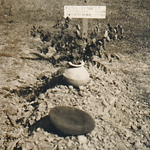
TURNER, Richard Kirkley
TURNER, William George Jack
TYREMAN, George Vincent
WAKEFIELD, Raymond
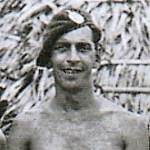
WAKELY, Terence Raymond John
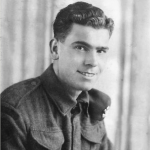
WALL, Reginald George
- 1939 Metropolitan Police Constable at Croydon Police Station.
WARD, Arthur William
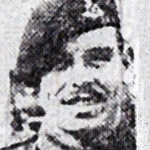
WATSON, J.R.
WATTS, Robert Edward
WEBB, George Henry
WEBB, Henry Thomas
- 1939 Metropoltan Police Constable at the Police Station, 370 Romford Rd., East Ham.
WEBSTER, Roland Hutchinson
WEEKES, Sydney George Douglas
WELCH, Frederick Edward
WELSH, J.L
WHITE, Horace George Lewis
WILLIAMS, Albert
WILLIAMS, Francis Arthur
WILLIAMS, Sidney Walter
WILSON, Graham Charles
WILSON, Irvine Ridley
WOOD, Hector
WOOLLARD, George
WORMLEY, Wilfrid John
WRIGHT, Harold
A newspaper article about Police Intakes
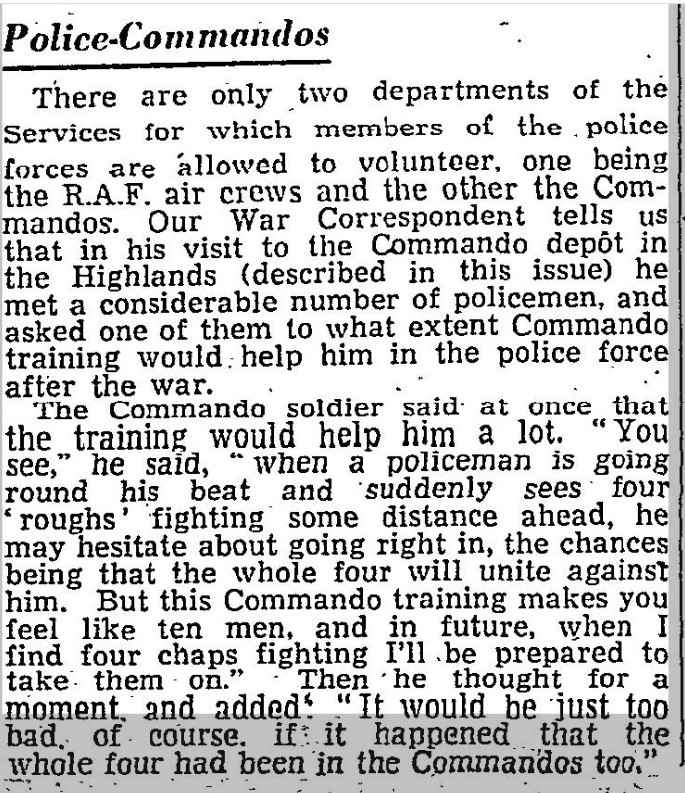
Published in The Scotsman 15 January 1943.
A newspaper article about Scottish Police War Service
A newspaper article on Lancashire Police Officers in the Armed Forces
Police Intakes (Royal Marines)
-
John FISHWICK (Northampton Borough Police Force).
-
Alf BENNETT (Northampton Borough Police Force).
-
Reg ROSWELL (Northampton County Police Force).
-
Alf BROWN (Northampton County Police Force).
-
Stan BEAVER (Northampton County Police Force). Possibly ident with [more....].
Commando Memorial at Spean Bridge
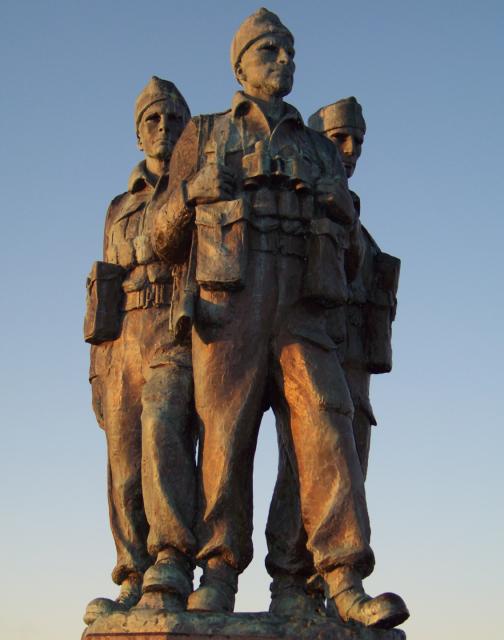 The Memorial at Spean Bridge was unveiled by Queen Elizabeth the Queen Mother on Saturday 27th September 1952. There was no parade or ceremonial drill. The Queen Mother expressing a wish to walk through a line of Commandos on the way back to her car.
The Memorial at Spean Bridge was unveiled by Queen Elizabeth the Queen Mother on Saturday 27th September 1952. There was no parade or ceremonial drill. The Queen Mother expressing a wish to walk through a line of Commandos on the way back to her car.
A full history of this Memorial, and others, can be found via the main navigation menu on the Home page here: Commando Memorials
Read on from below right.....
Origins of the Green Beret
The origins of the Green Beret issued in 1942 are explained within the Commando Insignia and Memorablia album of the Gallery [ Read in Gallery.... ].
[Image] The Green Beret of Bob Mewett No.12 Cdo. and No.1 Cdo.]
